- All Destinations
- National Parks
- The Pacific
- TRANSPORTATION
- Cost of Living
- Costa Rica Education
- Health Care
- Work in Costa Rica
- Residency Overview
- Restaurants
- 15 Day Weather Forecast
- Weather Regions
- Dry Season vs Wet Season
- Holiday & Festivals
- National Flag
- Customs & Etiquette

Real Estate
- Featured Properties
- Local Real Estate
- Before you buy
- Real Estate FAQs
- Find my Property
- Find my Rental
- Tres Leches
- Rice with Chicken
- Cheese Beans Turnover
- Gallo Pinto
- Costa Rican Food
- Before Doing Business in Costa Rica
- Setting up a Corporation
- Demographics
- Economic Indicators
- Oct. 9-Oct. 9 San Isidro Anniversary
- Oct. 11-Oct. 22 Puerto Viejo Carnival
- Oct. 12-Oct. 12 Virgin of Pilar Day
- Oct. 15-Oct. 18 Upala Corn Festival
Travel Blog
- My First Cup of Coffee
- Top Six Extra Things to Pack on Your Next Trip Abroad
- Ten Things to do on the beach in Manuel Antonio
- Eating Alone in Costa Rica
- Nosara Yoga: Switching the Channel
- Riding a bus to Sierpe in Costa Rica
- High speeds, high waves, high in the air over Manuel Antonio
- In-shore fishing off the coast of Manuel Antonio
- Enjoying Puerto Viejo on $28 a day
- How conservation saved Tortuguero
Living in Costa Rica Blog
- Protecting the kinkajous in Manuel Antonio
- Learning Spanish at Rancho Margot
- Backyard Surf Series on Hermosa Beach
- Life in the Monteverde Countryside
- Border Crossing: Nicaragua by Boat
- The Top 5 Reasons I love living in Tamarindo
- A Look Back: Tamarindo, Six Months Later
- Fruit of the Month: Cas
- E-Voting Info for American Expats
- Naturalized Costa Rican Citizenship by Marriage
- Red Eyed Tree Frogs
- White-faced Monkeys
- Scarlet Macaws
- Leatherback Sea Turtles
Itineraries
- 6 Day Best of Activities
- 10 Day Nature Lovers
- 15 Day Best of Destinations
- 12 Day Honeymoon
- 5 Best Waterfalls
- Spectacular Beaches
- Best of Activities
- Best Kept Secrets
- Best of Destinations
- Sky Trek Canopy Tour
- Celeste River Waterfall
- Superman Canopy Tour
- Tortuguero Canal Tour
- Journey to Cocos Island
Medical Tourism
- Dental Care
- Book a Medical Vacation with Us
- Cosmetic Surgery

Rural Tourism
Get a first-hand look into the day-to-day life of Costa Ricans with rural tourism, which focuses on the preservation of local culture while encouraging sustainability. Give back to the people and places that make your trip unforgettable as you learn about local traditions and cultures. Enjoy the most authentic Costa Rican experience possible – sit down for a typical family dinner, stretch your Spanish skills, or help collect farm-fresh eggs for your breakfast. Community tourism is respectful tourism – preservation of local customs, a nod to history, and consideration for the local environment.
As a rural tourist, your dollars bolster the local economy and directly benefit the communities you visit. On the Nicoya Peninsula, rural tourism monies help protect private reserves and develop environmental education programs. In the north Pacific, your tourism dollars help support a youth collective and a women’s crafts cooperative. Visitors to rural communities will share in true Costa Rican hospitality. Sit down for a family dinner of homemade gallo pinto, fresh cheese, locally farmed chicken, and sip a fruit drink made from backyard bounty. If you’re interested, learn how to make the cheese and choose the ripest, juiciest fruit. Use the trapiche, or sugar press, to make a delicious sugar cane drink. Participate, enjoy, make lifelong friendships – you’re a rural tourist.
Sustainable Living
Travel to Puriscal , a town of picturesque, green mountains and deep valleys just 30 miles west of San Jose. Explore Costa Rica's great outdoors in a way you never have: meet farmers, learn to herd cattle at a local ranch, or learn to fish with just a hook and line. Later, dive into Central Valley traditions with a visit to Don Franklin’s Trapiche Tour where you can learn how sugar cane is transformed into granulated sugar, make your own sugar cane juice, and dig into some sweet treats. Later, visit the Vegas de Santiago Tobacco Tour and discover the process of cigar making and how tobacco traditions have had a positive socioeconomic effect on this mountain town. Located in the tiny village of Mastatal de Puriscal, the family-run La Iguana Chocolate Farm has produced organic chocolate for more than 25 years. The sustainable farm offers daily tours and welcomes volunteers to assist in cocoa production and local community service projects.
Community Farming
Finca La Bella offers its guests a look into its 122-acre community-farming project located just three miles from Monteverde . Here, you’ll stay with local farming families – wake up with the roosters, help milk the cows, and try your hand at making traditional foods. Learn about the Finca’s farming projects that include organic arabica coffee, beans, sugar cane and bananas. Share in daily activities and learn what it’s like to be part of a Costa Rican family – by the time you leave, you’ll feel like you’ve made friends for a lifetime.
Delicious Dairy
Take a trip to the Juanilama Reserve, located in Santa Rosa de Pocosol, around 20 miles from Arenal . The town’s friendly residents gladly share their traditional knowledge with guests – start by milking a cow, then help turn your freshly-squeezed milk into a mouthwatering cheese. When you’re done, fry up the queso tierno, or young cheese, grab some bread, and sit down to snack with your new friends. Juanilama Reserve also offers hikes to the beautiful La Leona Waterfall, horseback rides, and tours of their agro-industry, which produces yucca and ginger, among other edibles.
Hometown Visit
Head on up to La Casona, or The Big House, located in downtown Tortuguero . You’ll be welcomed with warm smiles and plenty of hospitality from a Costa Rican family who shares the house with their guests. Dine on Costa Rica’s favorite dishes – heart of palm lasagna, chicken with rice, and other delicious goodies – and lounge in hammocks under thatched roofs. Explore the canals like the residents do, in a dug-out canoe, and hike through Tortuguero National Park with a local guide. You’ll enjoy Tortuguero as if it were your hometown, too.
Indigenous Culture & Conservation
Known as the cradle of Costa Rica’s remaining indigenous cultures, the areas surrounding Cahuita and Puerto Viejo offers many chances to visit traditional communities. The Kekoldi Indigenous Reserve is an ideal place to begin your quest for ancestral wisdom as well as Bribri and Kekoldi traditions. Visit the reserve’s green iguana breeding and preservation project, take a chocolate tour, dine on traditional foods, or climb to the birding tower and observe one of the largest raptor – vultures, osprey, kites, hawks, and falcons – migrations in the world. As you become one with nature, you’ll feel the tug of ancient traditions and begin to understand the knowledge that has been passed on for generations.
Rural Traditions
Visit Reserva Los Campesinos , or the Peasant’s Reserve, just east of Manuel Antonio to experience the rural traditions that have sustained Costa Ricans for centuries. Wander through the reserve’s 80 acres of protected rainforest, meander through a maze of hanging bridges, learn about medicinal plants, take a basket ride on the river, or jump into natural swimming holes for a refreshing dip. You’ll dine on traditional dishes cooked on a wood stove, nibble on organically-grown greens, and talk with men and women who make their living in the same ways as did their great-grandparents.
Wild Wonderland
Named after an indigenous legend much like Shakespeare’s Romeo and Juliet, Curubanda Lodge is one of the north Pacific’s most successful rural tourism initiatives. Located between Rincon de la Vieja and the Gulf of Papagayo, the lodge offers exquisite views that stretch as far as Lake Nicaragua and the Caribbean coast. Hike to hidden gems like Cacao Volcano and untouristed waterfalls, participate in twice-daily cow milkings, and investigate the area’s prolific flora and fauna.
Chocolate Delights
Located near the Osa Peninsula's Puerto Jimenez , Finca Kobo is dedicated to sustainable farming, chocolate production, and showing tourists a great time. Meaning "Dream Farm," Finca Kobo is divided into four sections: primary forest, secondary forest, regeneration areas, and biological cooridors. While you learn about local ecosystems, your guide will provide insight into chocolate production and the history of cacao in Costa Rica – including its signifcance to early indigenous groups and ongoing importance to modern agriculture and the local economy. Best of all, the tour ends with a delicious feast – chow down on fresh cocoa beans, homemade chocolate, home-baked sweets, and fresh fruits.
Get a vacation package inspired on these trip ideas!
Please provide us with the following information and we will create a vacation package taylored to your needs and interests. (*) denotes required information.
Trip Budget
Total funds available for hotels, activities and transportation (airfare not included)
When will you come?
Who are you traveling with, what do you want to see, what do you want to do.
- Contact Info
- Testimonials & Reviews
- Advertise with Us!
Signup for our newsletter
Stay in touch and get the inside scoop.
- Privacy Policy
- Terms & Conditions
© 1996-2024 costarica.com, Inc. All rights reserved.

The Juanilama Community: Rural Tourism in Costa Rica
- Posted on 21/12/2016
Happy Travellers
adventure, agriculture, bird-watching, coffee, community-based tourism, cultural experiences, cultural heritage, environmental preservation, hiking, homestays, horse riding, organic farming, rural tourism, social and environmental projects, sustainable development, traditional gastronomy, wildlife
This is the first of a series of blog posts about ecotourism and rural tourism in Costa Rica. Earlier this month, we organised a tour for Hannah, Kasi and Simone, bloggers and members of the Ethical Influencer Network. Hannah kicks off the series by sharing with us her experience at the Juanilama community:
A little over two weeks ago, I was sitting in a sunny outdoor kitchen in the home of a Costa Rican family, scooping up rice and beans onto a handmade tortilla while laughing along with the women sitting across from me as they teased each other in rapid-fire Spanish.

Sharing a meal. It brings us together; it’s been used as a symbol of goodwill and friendship from the very beginnings of society. When I travel, my most treasured moments usually come from connecting with others, so it’s not surprising that many of my favorite memories of my recent trip to Costa Rica through Sumak Travel center around the meals and experiences I shared with my new local friends while visiting the Juanilama Rural Community.
The Juanilama Community is a beautiful group of people committed to preserving cultural traditions and conserving the land that they prize through a rural tourism initiative that they run themselves. The initiative has been running since 2000, and the community has managed to keep the groups that they host small, and the impact of these groups minimal, during the past 16 years. Though the tourism program brings in some supplemental income for the community, any member will quickly tell you that “it’s not about the money”, but rather about facilitating a truly authentic travel experience for their guests and sharing their love for their beloved Costa Rica .
Immersion in a rural community
I spent two action-packed days visiting the Juanilama Community with fellow writers from The Ethical Influencer Network. Upon our arrival, we were greeted by our hosts, who introduced themselves and told us about their individual roles within the community’s tourism program. They’d prepared a full schedule of activities for us to immerse us within “the real Costa Rica” and teach us about “la vida local”. That immersion included dividing our group up to stay in the various homes of community members who’d been “assigned” to each of us (wonderful people who jokingly referred to themselves as our “mamas” and “papas” while we stayed in their homes).
Throughout our time at the Juanilama community, we were constantly learning from our hosts:
Sandra showed us around the community, filling us in on the history of the area and showing us how yucca and sugarcane are harvested. We also walked through the gardens surrounding many of the community’s colorful homes, and were schooled on the diverse offering of plants grown there and each of their medicinal uses. Learning is hands-on at Juanilama and we were constantly encouraged to experience everything with as many senses as we could: touching the gigantic, thick leaves that are known as the “poor man’s umbrella”, smelling the bark of the cinnamon tree, tasting herbs .

Carlos (who has lived in the community for 30 years), took us on a trek through the green jewel that is the rainforest to visit a pristine waterfall surrounded by lush primary forest. He spoke about the rainforest as though it was a much-beloved friend, stopping at regular intervals to let us in on the secrets that it has to share (trees that can “walk”, shy plants that shrink back in response to touch, a tiny ant that can deliver a sting so powerful you’ll feel a searing, bullet-like pain…).
Elena and Giselle taught us how to repurpose trash- plastic bottles, old newspapers, and tin cans- to make crafts to take home as souvenirs.
This is what makes Sumak’s particular brand of travel so impactful, in my eyes: so often, travelers visit other countries with the intention of volunteering or “teaching” something to the local community. With Sumak, the tables are turned. Instead of looking at what you can offer, you’ll realize how much you have to learn.

Back to those meals I mentioned – the women of the community all came together to teach my fellow travelers and me several cooking classes throughout our time together, showing us how to make tortillas, cook plantains, and assemble a delicious sugary coconut dessert. We even milked a cow and learned how to make fresh cheese! We’d then sit and enjoy the fruits of our labor together. We learned about each others’ lives, families, hobbies, and beliefs. Everyone came together on our final night to put on a “fiesta”- we shared yet another memorable meal, watched the local schoolchildren perform traditional dances, and shared many laughs as several of our “mamas” patiently taught us merengue and salsa moves.
For the eco-conscious traveler, you’ll be thrilled to find that the Juanilama Community shares your values. Your food will be local (much of it grown in the gardens a few steps outside your lodgings), and you’ll note that the community produces very little waste. You’ll be encouraged to keep your use of electricity to a minimum and to conserve water when you shower.

If you’ve never experienced community based, rural tourism, you’re missing out! Many travelers crave an “authentic” experience while touring a new country, but I’d venture to guess that not many really find it while zip-lining with other tourists or hanging out at an overcrowded beach. Let Sumak Travel’s expert staff set you up with a customized experience that reaches beyond the scope of normal tourist activities and be amazed at how much richer your time spent abroad will become.
About the author:
Hannah writes about ethical and sustainable living at Life, Style & Justice. She is also the founder of the Ethical Influencer Network – a global community of writers and creatives committed to promoting conscious consumerism. See more from Hannah’s trip with us on Instagram: #ethicalinfluencersxsumaktravel
How to do it:
If you are planning to visit Juanilama on your own, you can contact Sandra at [email protected] (in Spanish) or visit their website: www.turismoruraljuanilama.org
If you are looking for a tailor-made tour in Costa Rica, visit our Costa Rica holidays page. Finally, don’t forget to subscribe to our quarterly newsletter to make sure you never miss blog posts like this one in the future!
Spread the word!
- Click to share on WhatsApp (Opens in new window)
- Click to share on Telegram (Opens in new window)
- Click to share on Facebook (Opens in new window)
- Click to share on Twitter (Opens in new window)
- Click to share on Pinterest (Opens in new window)
- Click to share on Mastodon (Opens in new window)
- Click to share on LinkedIn (Opens in new window)
- Click to email a link to a friend (Opens in new window)
Related Posts
Subscribe to our newsletter.
We are constantly adding new destinations, tours and blog posts to our platform. To keep up to date, you can subscribe to our newsletter.

We've signed up to the Travel Foundation's Forum and have committed to take action on sustainability within our business.

Privacy Overview
COMMUNITY RURAL TOURISM
Community rural tourism.
Based on Community Rural Tourism
Community Rural Tourism allows you to live an authentic experience, with personalized attention, giving you the enjoyment of our rurality, to know the essence and identity of Costa Rica, characterized by the quality offered by each of the companies that offer this product.
In a perfect combination of nature and culture, you will discover the Pure Life of Costa Rica, by enjoying and sharing diverse environments full of peace, comfort, coexistence with our customs and traditions, immersed in splendid natural diversity.
In a characteristic family atmosphere of the offer, it is common to enjoy personalized attention that allows you to strengthen your knowledge of rural culture, agricultural traditions, and small artisan industries; to enter into the rurality of our country through traditional gastronomy, the authenticity of the communities, and the richness expressed in their way of life in a natural environment, where sustainable practices promoted by entrepreneurs prevail as part of these products.
Historical Review
In Costa Rica, there is the Association of Community Rural Tourism in Costa Rica (ACTUAR), which emerged in 2001, during the first Ecotourism meeting, organized by the United Nations Program for Small Grants (PPD). They have supported over 50 community rural tourism initiatives as a means to promote sustainable development.
The purpose of ACTUAR is to promote environmental, social, cultural, and economic sustainability of community rural tourism initiatives in Costa Rica, by establishing strategic partnerships for the marketing of community tourism, strengthening the capacity of partners, and managing resources. Among its values is the protection of natural resources through livelihood generation for men and women.
Community-based rural tourism offers the opportunity to freely experience the essence of life in the countryside and most of the pristine natural landscapes with excellent hosts. It also provides people from the countryside the opportunity to showcase the activities, traditions, and lifestyles of the local population.
Experiences of rural tourism develop from cooperatives or community associations that own private ecological reserves or are close to areas of environmental and cultural interest. These communities offer new experiences that combine tourism services, such as accommodation, visits, and crafts, with the stunning landscapes and vibrant culture of their location, including agricultural culture, indigenous cultures, or Afro-Caribbean cultures. This allows our guests to discover the real Costa Rica, explore tropical paradises, benefit, and share with the communities that are involved in the conservation of natural resources, have fun, and relax in a healthy and creative way.
Every person who takes a trip through the community-based rural tourism modality has the opportunity to learn not only about the natural beauties of the country but also about the ways of life and the culture of the place they visit.
In this way, the communities within this guide have decided how they want to present themselves to the visitor, to lead and manage their own initiative, to feel proud to share who they are and what they do, the impressive natural and cultural wealth that they have inherited. Community-based rural tourism is based on respect for the host community, guests, and this planet that we share.
Nature lovers will be able to get a glimpse of the wilderness in the company of a local guide who will tell them about the traditional uses of plants, tell them stories of what happened in that forest, and convey much more than facts: experiences.
Community-based rural tourism is implemented by community associations. Communities have private ecological reserves or are located near areas of environmental and cultural interest. All of them offer visitors a mix of ecological and cultural adventures, in addition to the usual tourist services such as accommodation, tours, and handicrafts. Those who visit them have the opportunity to discover the authentic Costa Rica, as they will be able to explore much more than the popular tourist routes and meet people committed to the conservation of rural areas.
- Boating Holidays
- Asia & Pacific
- Australia & New Zealand
- Central America
- Indonesia & Indian Ocean
- Middle East
- Scandinavia
- South America
- Business Travel
- Culinary Travel
- Wellness Travel
- Golf Travel
- Travel Style
- Travel Gear
- Travel Fashion
- Real Estate
- Destination Weddings
- Fishing Holidays
- Tricks & Hacks
- Travel News
- #WHERETONEXT
- Read All the Issues
- Working with DRIFT Travel
- Submit Your Photos to DRIFT Travel
- DRIFT Travel Magazine Media Kit

Costa Rica Rural Tourism: Activities That Support Local Communities
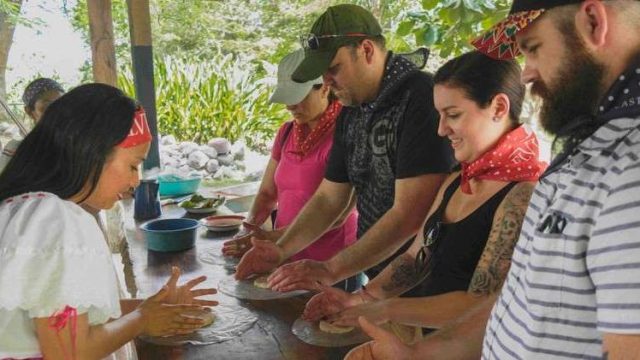
Costa Rica is seeing a rise in rural tourism with visitors participating in authentic cultural activities outside the main tourist hotspots, which positively impact the locals and small communities who invite visitors to share in activities, traditions and storytelling. Ninety-one percent of Costa Rica’s visitors report culture as their top reason for visiting the destination, and the country has long encouraged the development of community-based rural tourism businesses, which can provide for small communities economically, socially and culturally.

Here are a few activities that allow tourists to support local communities during their travels in Costa Rica…
Culture & Tradition: The Oxcart has long been a symbol of rural Costa Rican history, pride and tradition. For centuries, numerous farms all over the country utilised this traditional form of transportation to cart their coffee beans and sugar cane to market. Farmers differentiated themselves from other traders by painting their carts in beautiful patterns and bright colours. Now travellers can see the carts being painted in a rainbow of colour in the historic towns of Sarchí and San Antonio de Escazú. In addition to touring oxcart factories, travelers can enjoy the oxcart tradition by touring a cocoa or coffee plantation in an oxcart and purchasing hand-painted oxcart souvenirs for family and friends.
Nature Conservation: In Guanacaste province, travellers can find working ranches and wetlands bordering the Tempisque River dedicated to protecting the many species of birds, reptiles, mammals and flora of the region. Enjoy a traditional Casado lunch in a ranch house, before watching sugar cane juice being extracted by oxen and taking to the river for an afternoon of wildlife watching. Tourist dollars go back into the preservation of the cowboy (or Sabanero) tradition and continued conservation of the local area. Elsewhere in Costa Rica, bird watching, nocturnal tours and butterfly farms are a popular way to explore wildlife and flora and fauna. For a list of accredited nature tour guides, see the link below.
Sustainability: Many lodges and hotels around the country offer guests sustainability and community tours, and volunteer work opportunities around organic farming, energy production and eco-literacy. In the hilly terrain of Monteverde’s cloud forest and in the small community of El Castillo in La Fortuna, travellers can: learn about farming without the use of pesticides or chemical fertilizers to produce hyper local milk and cheese; try their hand at milking cows; learn about sustainable farming practises; and enjoy an authentic meal produced with the freshest local ingredients.
Communities: The Kekoldi Indian Reservation is home to the indigenous Bribri and Cabecar communities, and through a partnership with a local organisation, they aim to create community-based tourism with self-sustaining jobs for its residents. Tourists can participate in guided hikes through primary and secondary rainforests, and see panoramas over the Talamanca Mountains and Sixaola Valley whilst contributing to local sustainable tourism efforts. Another community, the Maleku Tribe, is the smallest tribe in Costa Rica and is made up of 650 people living near to the town of La Fortuna who keep tradition, culture and their indigenous language alive. The Maleku people have a wish to see local birds, animals and fauna thrive on their reservation, and have utilised income from tourism to reforest. Visitors can tour their re-seeding greenhouse, help plant trees and lend a hand on construction projects, where visitors can learn the importance of living off the land.
Click here to view more activities and a list of recommended tour operators .
RELATED ARTICLES MORE FROM AUTHOR
Romantic Fall Getaways in Belize
THE GUATEMALA HARD BOIL
New Hyper Local and Sustainable Cuisine at Hotel Belmar
Leave a reply cancel reply.
Save my name, email, and website in this browser for the next time I comment.
This site uses Akismet to reduce spam. Learn how your comment data is processed .
Privacy Overview
The Best Houston Car Service for Stress-Free Travel Needs
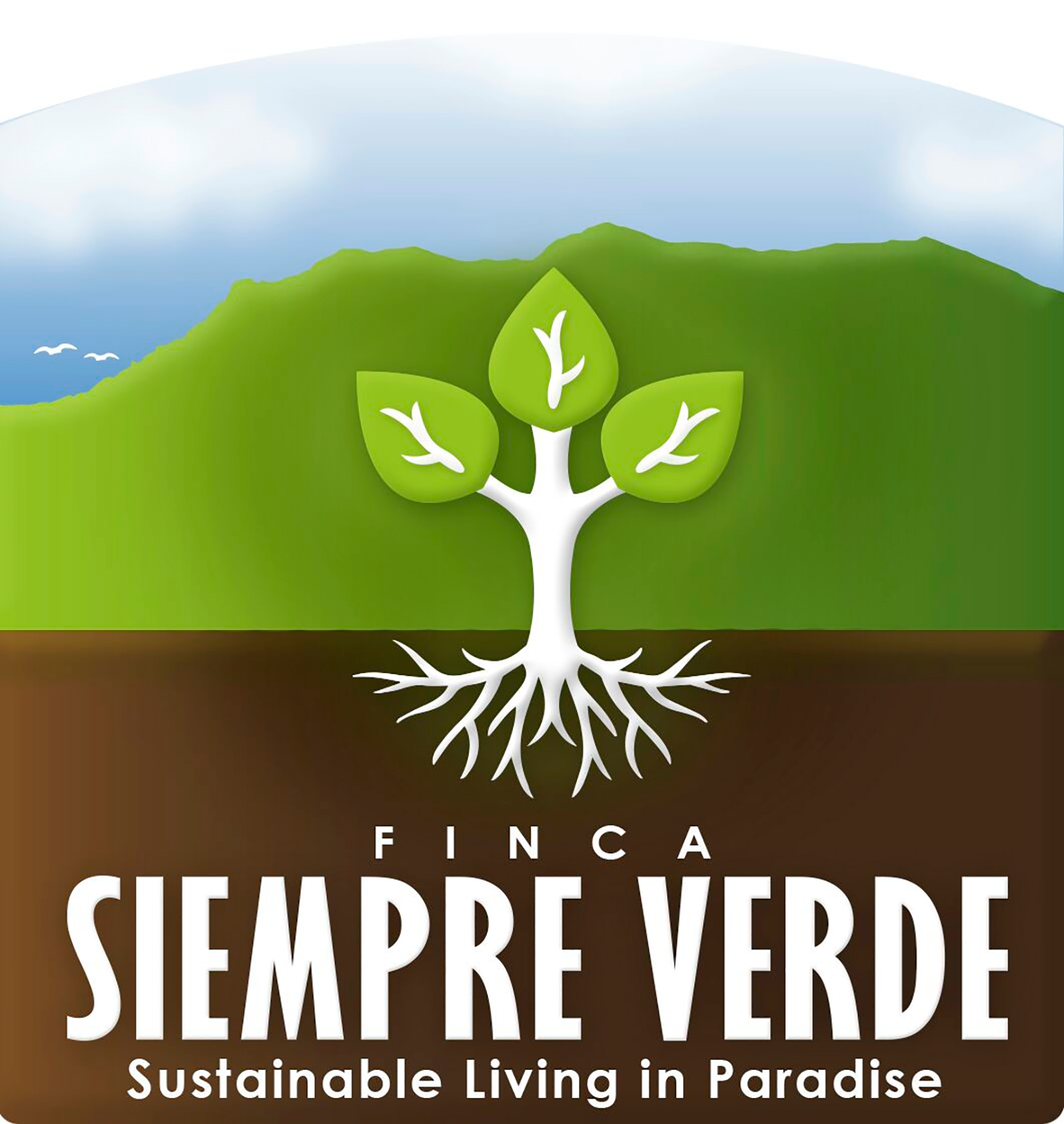
Finca Siempre Verde
LOCAL COMMUNITY
LA CANGREJA NATIONAL PARK
HOW TO ARRIVE
CLIMATE & WHAT TO BRING
LEARNING OPPORTUNITIES
ORGANIC FARM & NATUTAL BUILDING
SPANISH SCHOOL
PHOTO GALLERY
EVENT CALENDAR
Sustainable Living in Paradise
Help cultivate our organic farm, work on natural building projects, enjoy horseback riding tours, learn Spanish, and explore nature in our community.
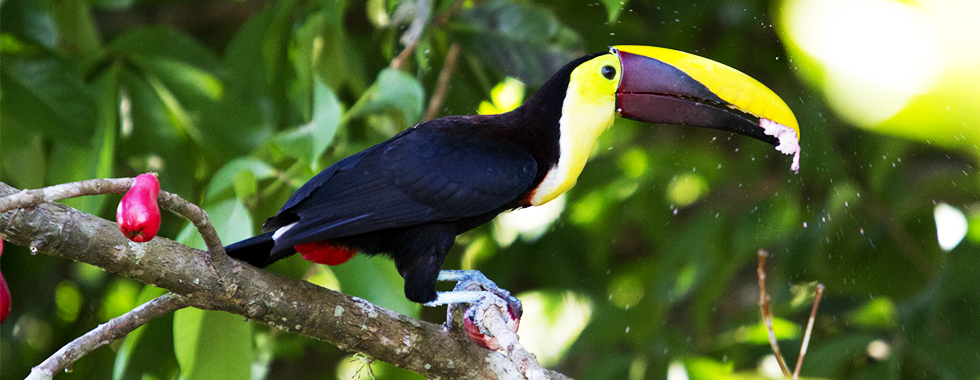
Horseback Riding Tours,
La Cangreja National Park...

Guests and volunteers have the opportunity to study Spanish in private group lessons...
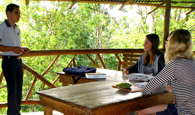
Living at Finca Siempre Verde can be a very rewarding...

You can see the special events and activities for you to enjoy to the fullest ...

Finca Siempre Verde is an ecotourism destination located in the small tranquil community of Mastatal, in close proximity to Costa Rica’s newest national park, La Cangreja National Park. It is family owned and operated by a Costa Rican family that has lived in this region for more than 100 years and has owned this property for 35 years.
We offer accommodations for guests, students, volunteers, interns, and groups. our structures are built using natural building techniques and local materials. our food is freshly cooked for every meal using local organic food, most of which is provided by our organic farm., for our visitors, we offer many options for learning, relaxing, and enjoying the region. these include private or group spanish lessons, a platform of more than 72 square meters for the practice of yoga, guided rainforest tours in our mountains that combine both humid and pre-montane rainforest in one of the most undiscovered regions of the country, hiking, horseback riding, as well as the opportunity to participate in our implementation of reforestation and permaculture projects..
We also offer packages for groups and are open for yoga retreats.
A day with us
Wildlife in our finca
View on Map

500mts south of Mastatal School, Mastatal of Puriscal, San José Costa Rica
Phone: +506 84048770

- Skip to main content
- Skip to primary sidebar
- Skip to footer
Travel Post Monthly
Providencia, Costa Rica: Rural Tourism in a Mountain Paradise
April 1, 2015 By tpmadmin

By Ann C. Randall ITWPA Member
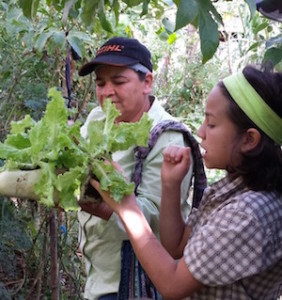
In the isolated rural community of Providencia in the Los Santos region of Costa Rica the residents have had to make do with what they have as both an economic and environmental necessity. Located about three hours south from San Jose, Providencia is reached seven miles off the Pan American Highway down a narrow, winding, dirt road that borders Parque Nacional Los Quetzales, the newest addition to Costa Rica’s expansive park system.
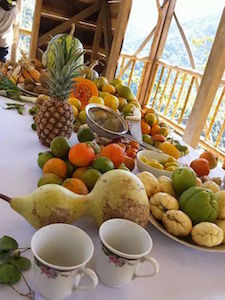
Struggling to make a living, the residents have turned to rural tourism as an income source. Dona Noire, her husband, and their three children operate Armonia Ambiental Lodge in the organic farm we toured. Up the road in La Piedra, Ana and Enrique Calderon Aguero run a small lodge and restaurant named La Cabina la Piedra and subsidize their income by operating an adjacent coffee plantation. Their neighbor, Flora Valverde Elizondo, produces juices, jams, nectars, and salsa from both the wild and cultivated fruits and vegetables in the area. She sells them out of her home along with handicrafts made of recycled newspaper. Her enterprising young neighbors teach tourists how to make newspaper handicrafts by running art classes out of their houses.
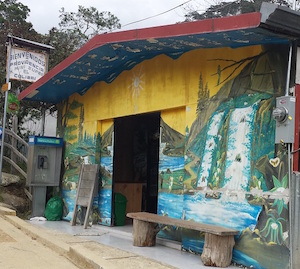
Are foreign drugstores clinically appropriate for Americans. Part 2
Related Posts
- The Best Volcanic Hot Spring Resort in Costa Rica
- Searching for Our Golden Years in Playas del Coco, Costa Rica
- Sailing Down the Nile in Beautiful Silence
- How to Eat Like a Real Palermitano
- Chobe National Park — The Ageless Traveler
- Beyond the Breweries: Sake Tasting in an Eclectic Berkeley Hideaway
©2021 Great Escape Publishing All Rights Reserved. Protected by copyright laws of the United States and international treaties. This content may only be used pursuant to the subscription agreement and any reproduction, copying, or redistribution (electronic or otherwise including on the world wide web), in whole or in part, is strictly prohibited without the express written permission of Great Escape Publishing
Home | Contact Us | Privacy Policy | Sitemap
Find Your Destination

Rural Tourism: a life changing experience
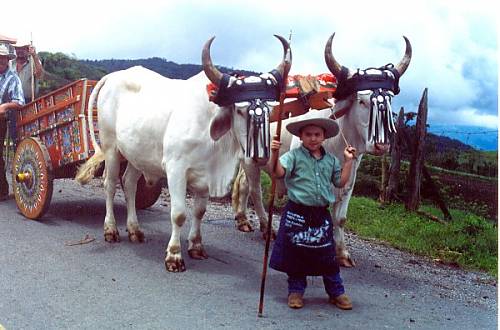
Costa Rica has been a bridge since its emerging from the ocean millions of years ago.
As a bridge uniting the Americas, it has become a melting pot of biodiversity and cultures, from times long before the colony until today, creating a mix giving us Costa Ricans our uniqueness, the Pura Vida lifestyle.
A form to experience this way of life is through rural tourism, where you can exchange everyday life with locals in a remote rural areas in different zones of the country, and learn about our local culture, customs, and foods.
You can live for a few days with local farmer families, collecting fruits, tending farm animals, learning to cook typical foods, and much more, all in harmony with nature. Each zone of our country has its own magic.
These experiences take visitors outside the tourist hot spots and benefit small family-run companies and their communities.
Each Rural Tourism experience will be unique and personalized, and completely immersive, creating life-long bonds of friendship and memories.
Ask us about our Rural Tourism options!
Related Posts
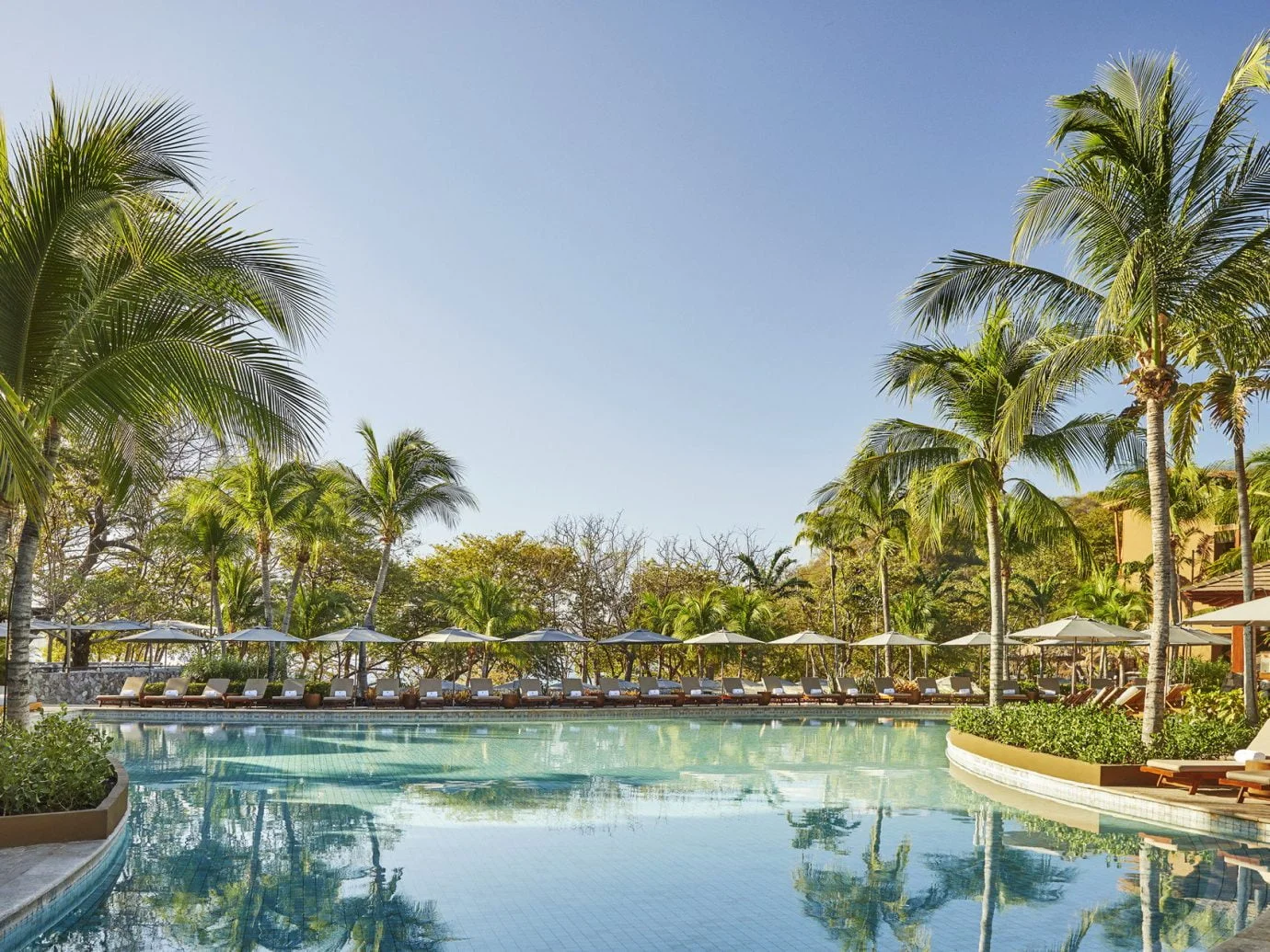
Winter Getaway: Trends and Information Travelers are Looking For

Benefits of Traveling for Mental Health

Celebrating World Tourism Day in Costa Rica
- Middle School
- Teen Spanish, Service and Turtle Rescue (Turrialba)
- Teen Surf Camp (Tamarindo)
- Teen Adventure Camp (Tamarindo)
- Teen Intensive Spanish (Tamarindo)
- Adult Spanish Lessons
- Summer Camp Lodging
- Rafting Pacuare River
- Canyoning and Canopy Tour
- Family River Rafting
- Horseback Riding Adventure
- Costa Rica Coffee Tour
- Archaeological site
- Dairy Farm Tour
- Rural Experiences
- Tropical Plantation Tour CATIE
- Tropical Bicycle Tour
- Turrialba Volcano Hike
- Guided hike in La Marta Refuge
- Rafting: Pacuare 2 Days
- Hiking 2 days-1 night
- Hiking 3 days-2 nights
- Adventure Experience 2-Days
- The Real Costa Rica Experience 5-days
- Local Community Homestay 3-days
- Hidden Paths 2-day adventure
- Hidden Paths 3-day adventure
- Family Experience 2-days
- Expedition through Costa Rica 9-days
- Custom itineraries
- Rural Experience
Transportation
Cargando ...

Rural Tourism Experience in Costa Rica
An authentic rural tourism experience.
To create an authentic rural tourism experience in Costa Rica, which creates an interrelation between the Mollejones community and its visitors.
This is achieved by offering a product with our essence, committed to inclusion, to the principles of sustainability and socio-cultural tourism activation.
Please note: These experiences are booked with and operated directly by the community of Mollejones. The following experiences do not include transportation or a guide, but you’ll be greeted by a host from the community with basic English skills.
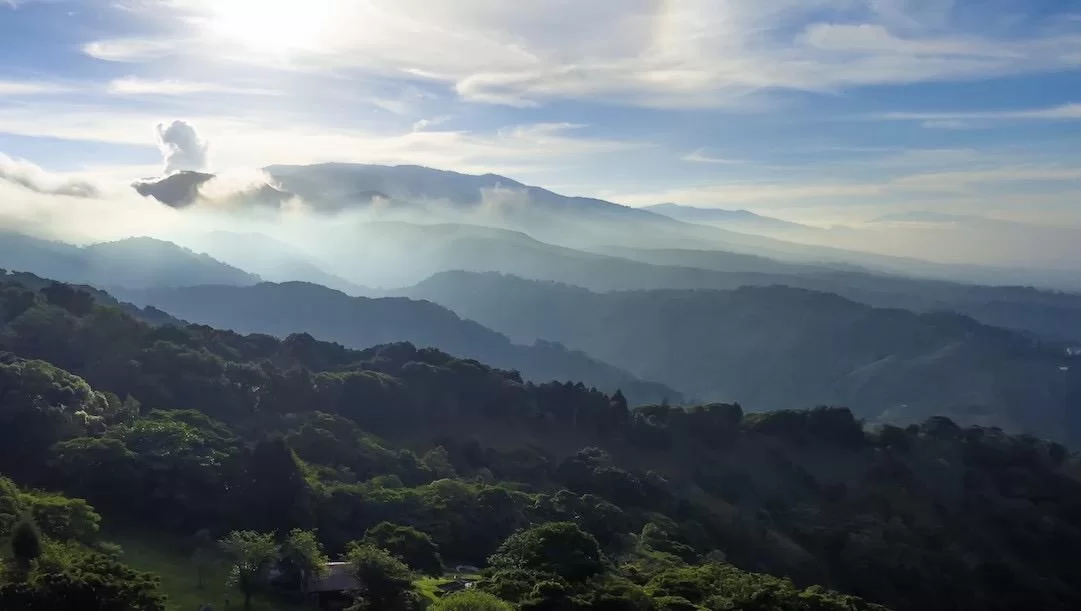
Our kitchen - Mojellones Comuity
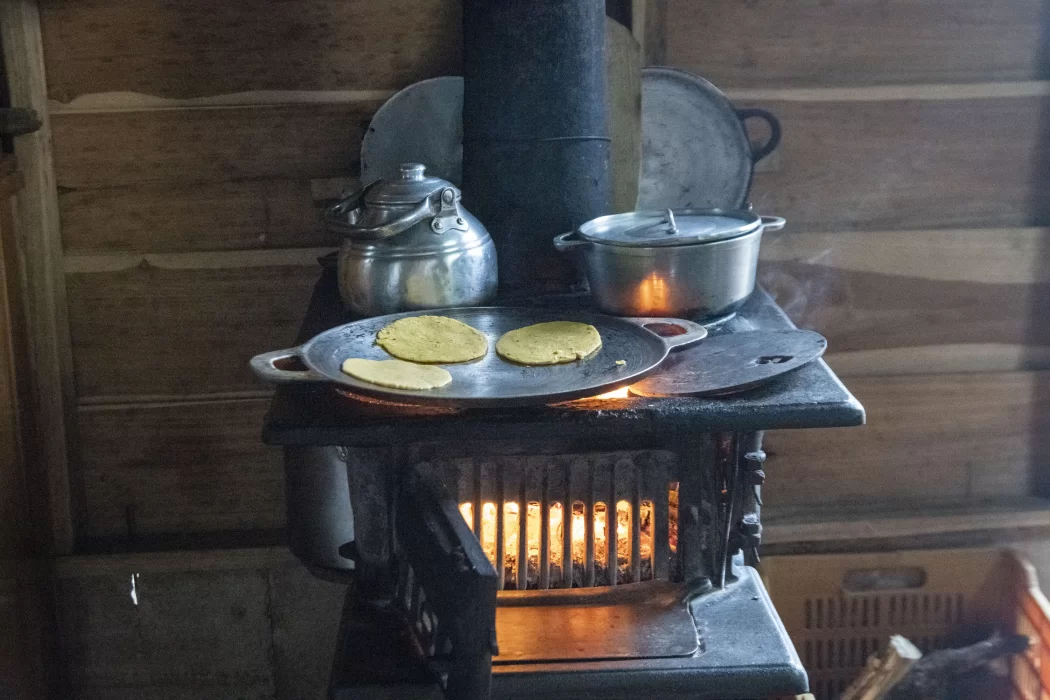
Unique flavors
The preparation of the traditional corn tortillas has a lot of work behind. Starting with the cob cooked with ashes, the husking of the corn, grinding it to make the dough, and from there the preparation of two delicious product: the tortillas with cheese and the bread baked in home-made tin ovens.
Some of the experiences we offer:
Patting my tortilla
- Traditional artisan bread
- We harvest Chileras (homemade hot sauces)
- The flavor of guava
Our community
Mollejones is a beautiful town of 240 hectares located in the mountains of Turrialba , currently 210 people live here.
The community was founded approximately 86 years ago, back in the 1930s. When Mr. Arnoldo Ramírez arrived in 1935 and 5 families were already living here.
The community joined with other people who had settled in the nearby area and together they developed an economy based on agriculture: growing rice, beans, corn, coffee, sugarcane and bananas. Later, domestic animals such as chickens, pigs and cattle were introduced.
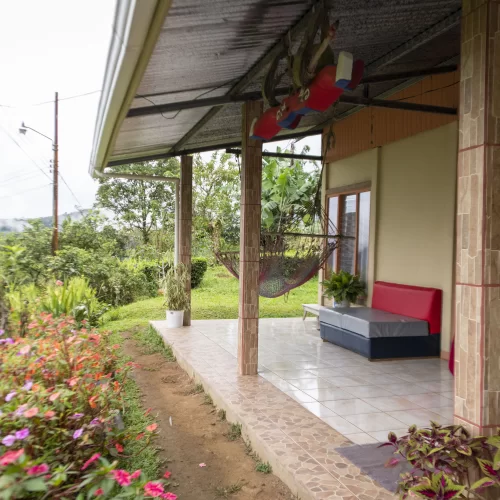
THE REAL RURAL TOURISM EXPERIENCE IN COSTA RICA
- Arrival to the town of Mollejones
- Visit the traditional sugar cane mill
- Learn to bake home-made bread
- Cultural activity
Per person (2 persons minimum)
- Arrival to host family
- Visit the butterfly garden
- Learn to make tortillas
- Cultural Activity & Gathering with the village elders
- Visit the cajetas experiences
CONSIDER FOR YOUR COMFORT AND PERSONAL SAFETY
- Comfortable, fast-drying clothes that you can wear for hiking
- Hiking shoes
- A change of clothes
VISIT POLICIES
- Minors cannot go out alone
- No alcoholic drinks and no smoking in the host family’s house
- No smoking within 20mts around the host family’s house
INTANGIBLE HERITAGE
The most valuable part of our visit will be sharing with the elders of the community. They’ll tell us their stories of what the town used to be like, its foundation and even teach us games and even show some tools and gadgets of those times. On top of this, a cultural night is included, where typical dances, traditional games and typical dishes are shared.
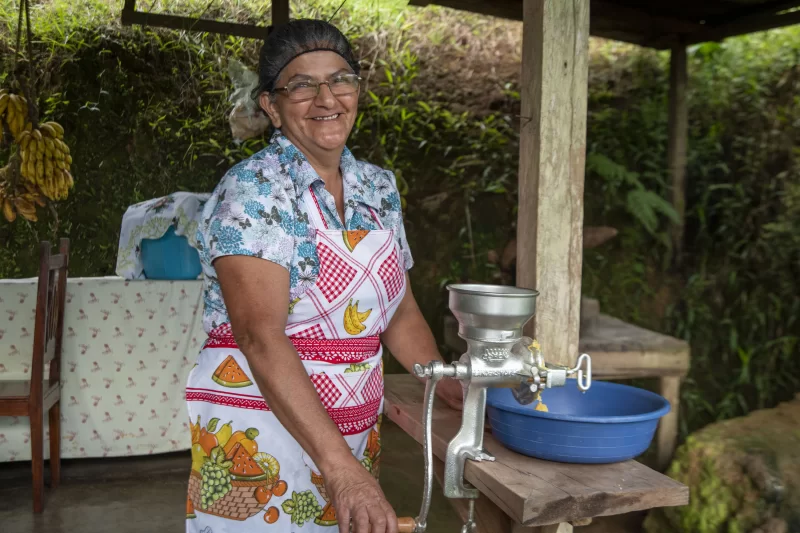
CULTURAL ATTRACTIONS
The rice mill.
The Pilón de Arroz (big wooden pestle and mortar used to mill rice) is part of the local culture, since Mollejones is one of the few high-altitude communities that produce rice , which differentiates them from other areas in Turrialba.
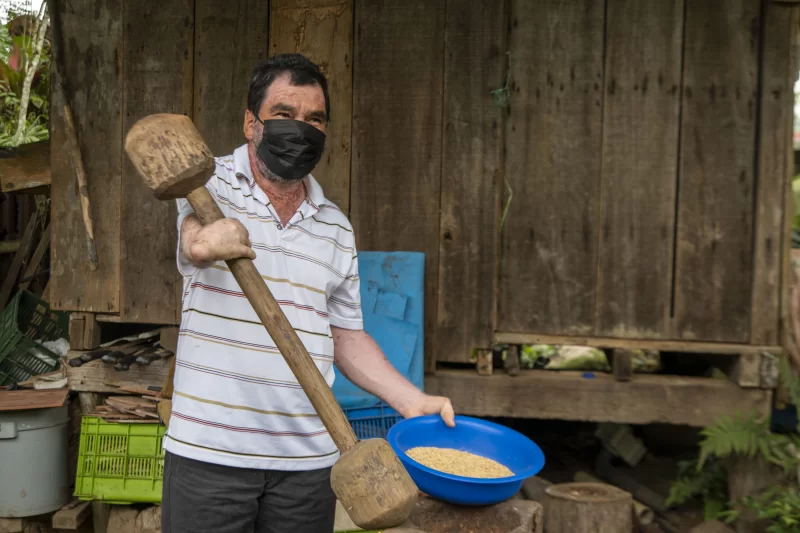
ACTIVITIES & ATTRACTIONS
Hacienda rc, mollejones essence, patting my tortilla, gathering with the village elders, art-traditional bread, butterfly home, finca don pito.
This sugar mill experience will allow you to learn about the sugar cane crop and the variety of products that are derived from it. The farmer will explain you the varieties of the cane and will show the process that is carried out with it until a finished product is obtained. You will be able to take part in every step of the process and taste the different sugar cane products. In this activity you will experience one of our most important traditions, in a genuine way to live the cultural heritage of Costa Rica.
This activity is carried out by different people in the community in an effort to rescue the traditions and values of our grandparents with dances, traditional games and agriculture. With a demonstration of how the rice crop is sown and harvested in our community, each participant learns and gets involved in an authentic cultural exchange. We carry out this activity before the visitor leaves, thanking them for their stay and sharing our inherited values.
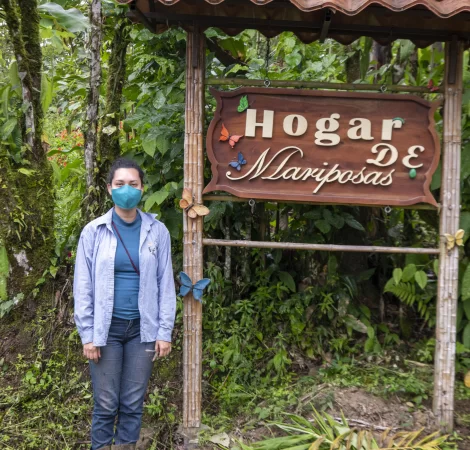
WE CONTINUE TO GROW, WAITING FOR YOUR VISIT TO ENJOY THE WARMTH AND ACTIVITIES OF OUR COMMUNITY
RURAL TOURISM EXPERIENCE IN COSTA RICA

FIRST CAR ARRIVED
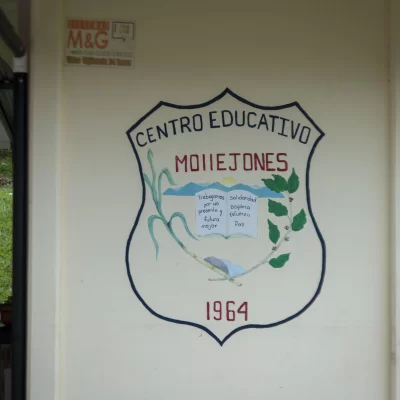
MOLLEJONES SCHOOL WAS FOUNDED
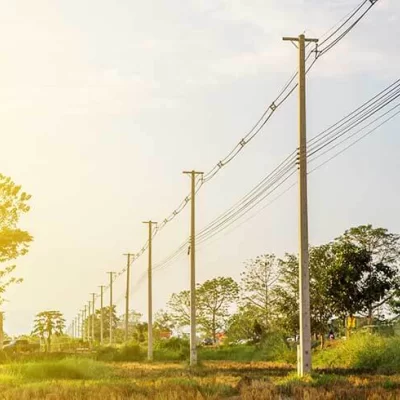
ELECTRICITY ARRIVES TO MOLLEJONES

FIRST TEMPLE GOT BUILT, THE CATHOLIC CHURCH OF MOLLEJONES
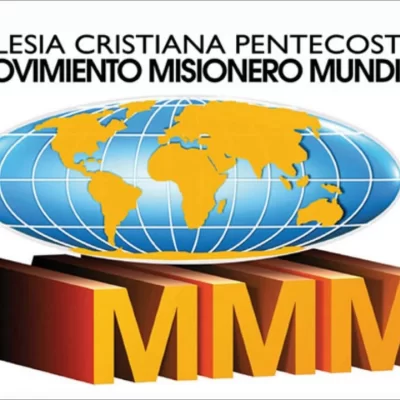
A SECOND RELIGION ARRIVED, THE WORLD MISSIONARY MOVEMENT

INTEGRAL DEVELOPMENT ASSOCIATION (ADI IN SPANISH) IS CREATED
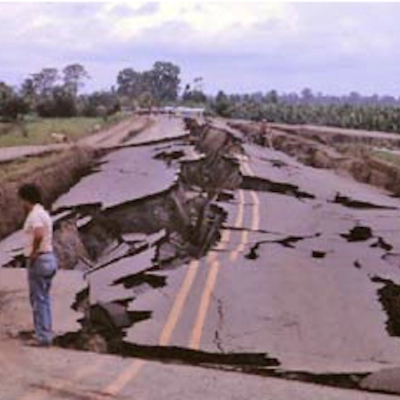
DUE TO LIMON EARTHQUAKE, A NEW COMMUNITY ARRANGEMENT AND STRUCTURE IS CREATED

HEALTH CENTER (EBAIS) IS BUILT BECAUSE OF THE NEED OF HEALTH SERVICES
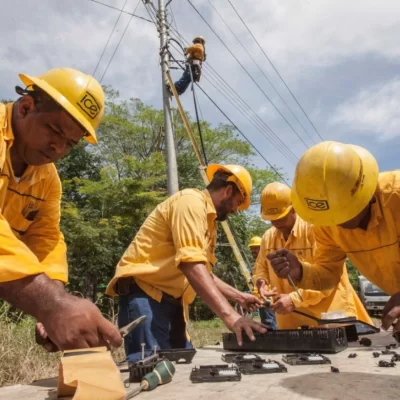
LANDLINES ARRIVE
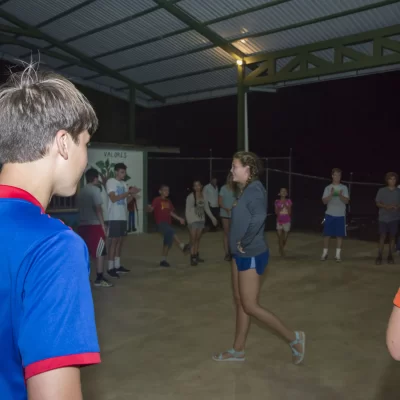
COMMUNITY OFFICIALLY OPENS ITS DOORS TO RURAL TOURISM
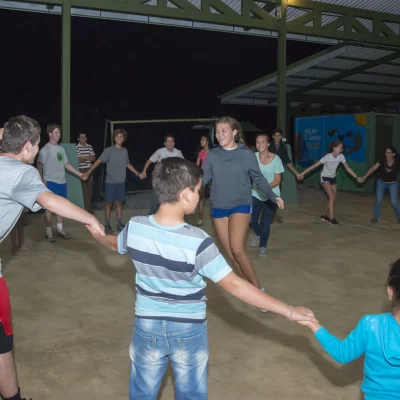
Construction of the multi-purpose court
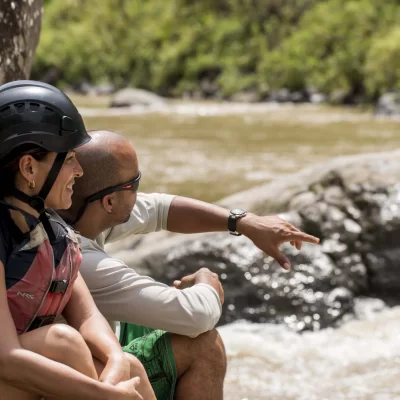
WORLD RAFTING CUP IS HELD IN PACUARE RIVER AND ATHLETES ARE HOSTED IN MOLLEJONES. ITS THE FIRST TIME IN HISTORY THIS CUP IS CARBON NEUTRAL
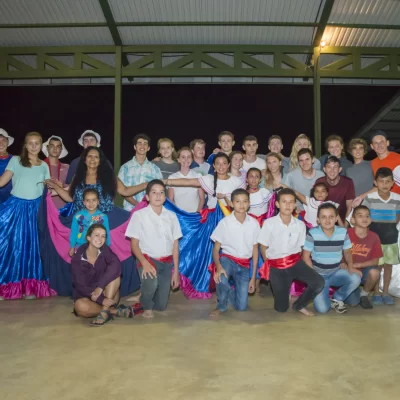
FIRST CULTURAL & EDUCATIONAL FESTIVAL IS HELD
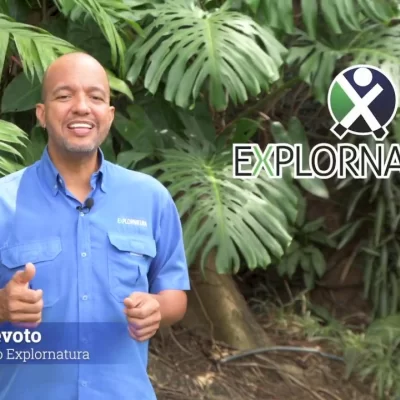
MOLLEJONES-EXPLORNATURA CONSORTIUM IS BORN
Monumento Nacional Guayabo

Parque Nacional Volcán Turrialba

TURRIALBA IS THE CANTON IN WHICH MOLLEJONES TOWN IS LOCATED.

THE HISTORY OF THE CANTON POSITIONS IT AS AN INDIGENOUS TERRITORY.

THE GUAYABO NATIONAL MONUMENT IS AN INDIGENOUS SETTLEMENT THAT STARTED AROUND 1500 BC. AND IT WAS INHABITED UNTIL THE YEAR 1400 AD, WHERE DEVELOPEMENT WORK STANDS OUT SUCH AS ITS AQUEDUCT, DECLARED IN 2009 “WORLD HERITAGE OF ENGINEERING” BY THE AMERICAN ASSOCIATION OF CIVIL ENGINEERS, stood out. (CFIA, 2009).
COSTARICAN ADDRESS
We are located 31 kilometers to the East of the Turrialba Valley taking route # 10 (Turrialba-Siquirres) for 22 kilometers, when you arrive at the El Cruce restaurant, take the entrance on the right and for 9 kilometers along the dirt road.

Our Company
Custom Itineraries
General FAQ for all camps
Spanish Sumer Camps
- Elementary School
- Learn Spanish and Rescue Turtles in Costa Rica
- Teen Spanish and Surf Camp
- Teen Intensive Spanish Camp
- Rafting Pacuare River Tour Costa Rica
- Canyoning and Canopy Tour Costa Rica - Explornatura
- Dairy farm tour
- Digital Nomads
- Real Estate
- Science & Tech
- Entertainment
- Environment
- Featured Event
- Things to Do
- Top Local Destinations

Volaris Reactivates the Route from San Salvador to San José
What does the costa rican tourism sector say about the low cost flights project to central america, guanacaste airport and ict announce increased frequencies from chicago and houston, minister william rodriguez highlights costa rica’s tourism as sustainable, innovative, and inclusive, tips for traveling to costa rica on a tight budget, what do people who take ayahuasca look for, christmas came first to puntarenas neighbor couldn’t wait any longer and has already completely decorated her house, a dog’s broken heart: the fight against separation anxiety from another dog or a person, get to know the thriving us expats community in costa rica, brief review so that you know about the independence of costa rica, the 6 best places to enjoy rural tourism in costa rica, artificial intelligence in the tourism sector, costa rica to report new record in attracting foreign investment for second consecutive year.
While suntanning in front of the sea in a beach chair will never go out of style and will never cease to be pleasant, “rural tourism” has become increasingly more popular among tourists . The connection with nature and tradition is not only cheaper and more comfortable, but it offers unique experiences to learn about and enjoy Costa Rica.
Rural areas of our country hide legendary customs and national treasures that few know about, which is why we went out to find good options for rural tourism so that you can discover Costa Rica in a different way. If you know more good options, please do not hesitate to tell us a couple to add to the list:
Curubanda Lodge:
This lodge is located in the Finca Nueva Zelandia of Quebrada Grande of Liberia, Guanacaste. It costs C20,000-30,000 ($40-60) per person. The lodge offers cabins for those that want lodging in four rooms with private bathrooms and hot water (total capacity of 12 people). It has a restaurant on-site. The lodge hosts hiking and horseback riding trips by primary and secondary forests and pastures to the volcanoes Cocoa and Rincon de la Vieja.
Practice milking in the dairy, visit hot springs, experience routes that you share with the neighbors and learn about their daily tasks such as the making of breads and cheese and the caring of orchids.
Hike to the Celeste River
This river is located in the Pilon of Bijagua in Upala, Alajuela. The hiking area opens at 8:30 a.m., and costs $80 per person (applies to groups of 2 people minimum, there are special prices for larger groups). There is a guided tour through the Tenorio Volcano National Park, visits to the majestic river which has a sky-blue color and is considered one of the principle natural wonders of Costa Rica. You can hike through paths, visit the viewpoint and the lagoon of the Celeste River, appreciate the area of bubbling water and the hot springs. Visit the nearby farms to learn about the planting, harvesting, crushing, washing, drying, roasting, and grounding of coffee – tasting included. Visit an artisan family to learn more about the Bijagua Basin and its inhabitants. The cost of the tour covers one night of lodging, three meals, one snack, the mentioned activities, and a guide.
Nacientes de Palmichal Rural Inn
The inn is located in Nacientes de Palmichael of Acosta, San Jose, one kilometer east of the Escuela San Pablo Palmichal. It opens at 7:30 a.m. The cost ranges from C20,000-27,5000 ($40-55) per person. The inn offers lodging with rooms equipped with their own bathrooms and private showers, hot water, spacious dressers with a beautiful wood trim, and special touches that will definitely make you enjoy your stay. The dining room features a regional cuisine, which is prepared from local agricultural products. Noteworthy is that the infrastructure of the kitchen is 100% typical, with its mud stove and firewood kitchen. They have orchards for the production and sale of organic vegetables. They will give you a coffee plantation tour with Mr. Manuel and Mrs. Mery, which will tell you humorous anecdotes of Costa Rican peasant life and the day-to-day work of the past.
You will be given a brief introduction to the subject of bio-digesters and the environmental and economic benefits of it, as well as its operation and maintenance. You will also be taught about artisan cheese production and be given the opportunity to milk the cows. During the journey, you may travel the butterfly path.
Discovering the Cangreja
It is located in Mastatal, Puriscal, San Jose, and opens at 10:30 a.m. It costs $60 (applies to groups with a minimum of 2 people, there is a special price for larger groups). In Mastatal you will be given a welcoming to the place, a walk through the family farm (crops and dairy). You will be given a waterfall tour in which you will discover paths that lead up to it. You can appreciate the interesting species of flora and fauna. There will be a tour of the Cangreja National Park, a hike through the paths, and a visit to some surrounding orchards. There will be free time to share with couples, friends, or relatives in which you can watch the sunset from a hammock or have a picnic in the park. One night of lodging is offered in the Villas Mastatal, three meals, and one snack to go.
Bribripa Cultural Center
This center is located 400 meters east of the school of Salitre, in Buenos Aires, Puntarenas. It opens at 7:00 a.m. The minimum cost for a group of two people is C47,500 ($95) per person. Thereafter, up to a group of 5 people, the same amount will be charged per person; of 6-10 people, the sum of C40,000 ($80) will be charged per person; and for eleven people, C38,000 ($76). The cost consists of a stay of two nights and three days. They offer an opportunity to have a unique adventure experience in an indigenous community. You will be able to participate in dances and songs, visit sacred sites, eat traditional food, try medicinal plants, and chat with the owners in order to learn the bribri language. There will be cultural activity tours to a sugar mill and natural pools. You can also visit the natural savannas of the community. If you wish, you can participate in different projects in the community as part of a volunteer program. The cost includes lodging, breakfasts, lunches, and dinners.
Los Trapiches Plantation
The plantation is located in Santa Gertrudis Sur, Gracia, Alajuela. It is open everyday from 8 a.m. to 5 p.m., and costs C3,000 ($6) for people older than 12 years, C2,5000 ($5) for senior citizens, and C2,000 ($4) for children under 12 years. Children from 0-3 years old are free. There are green zones, pools, and spaces to camp (only for groups from organizations and businesses). Pets are allowed.
Special: Every Sunday they open the sugar mill in which they prepare candy and sweet tapas, in company of the folklore story teller, Manuel ‘Manolo’ Rojas.
Source: conozcasucanton.cr
- Destinations
- hot springs
- National Parks
- natural pools
- rural tourism
Subscribe to our newsletter
Get all the latest news, events, offers and special announcements.
Latest News
Oyster farming: socioeconomic alternative for communities on the costa rican pacific coast, more articles like this.
Contact us: [email protected]
- Donate to TCRN
- Advertising Rates
- Marketing Services
- Write For Us
- Privacy Policy
© Copyright 2009-2023 The Costa Rica News / 14 Years of Pura Vida in Costa Rica / Alternative News For Costa Rica /
Agrotourism in Costa Rica
agrotourism in costa Rica and rural tourism are two terms that describe the essence of Hotel de Campo. Visiting costa rica is also be part of the rural tourism life in Costa Rica
Rural tourism or agrotourism are two terms that describe the essence of Hotel de Campo.
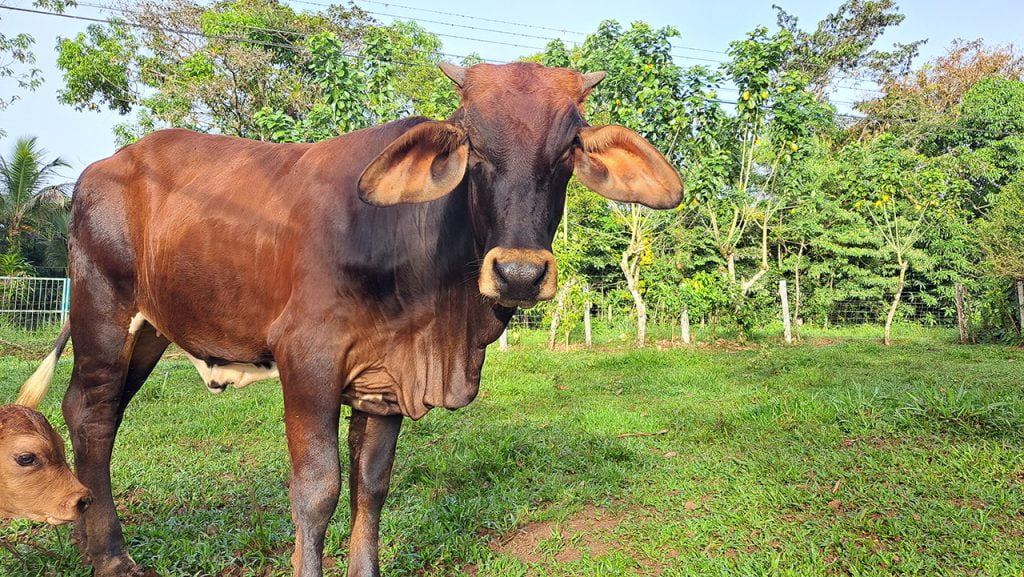
Hotel de Campo, which has been developed on a property of 50,000 m2, over time has become a small producing farm.
Hotel de Campo is a family-run tourist structure. And we like to eat well and healthily. For this reason from the beginning, we have started with the production of farm animals. Today we have some dairy cows, sheep, goats, pigs, chickens, and ducks.
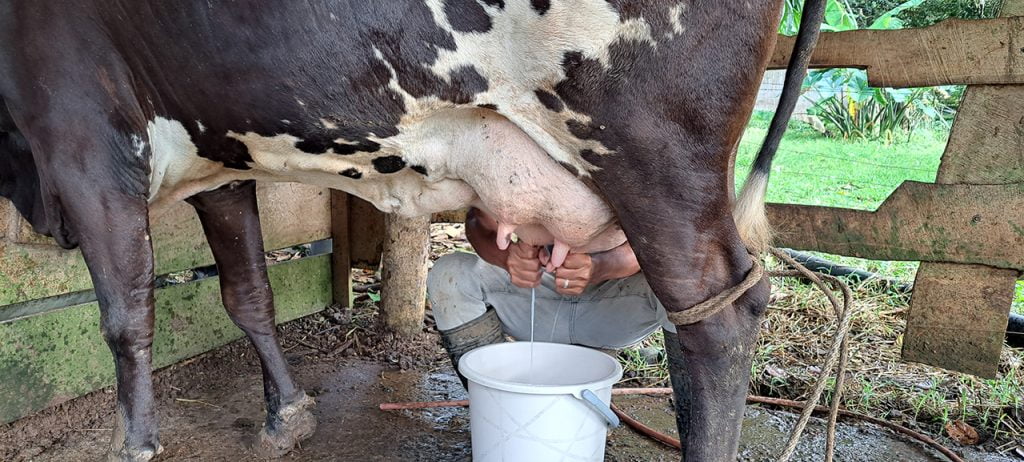
Thanks to this production, in the restaurant we can offer fresh, organic meals. Fresh milk is offered at breakfast, and cheese is also produced that we use in preparing meals.
The chickens are raised free. With the fresh eggs of the day, fresh pasta is prepared daily, homemade by hand exactly as the grandmothers used to make it in Italy (we are Italian, and we make excellent pasta). And they are also served at breakfast.
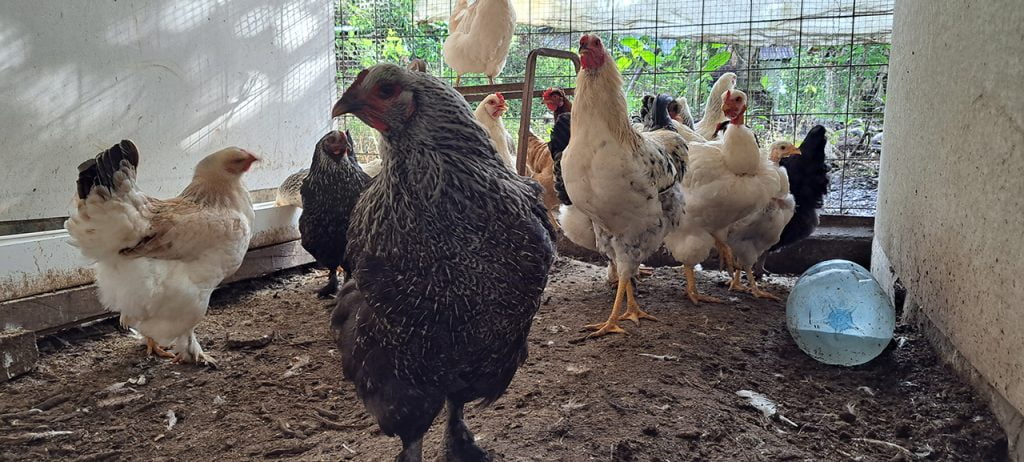
Our lamb meat is excellent, one of the best you’ve ever tasted. Our production is organic, and the animals grow free to pasture.
Restaurants always produce food leftovers, which would be a shame to waste. For this reason, we produce pigs, which are also raised in freedom so that their meat is of quality.
And there are also 2 large pets: 2 Spanish horses that spend their lives free.

When you visit Hotel de Campo in Caño Negro, you can enjoy this rural tourism experience. But don’t worry, we don’t make you work. But you do enjoy the results with excellent meals prepared always fresh. Now, if you like to participate in agricultural activities, you can gladly join us when it comes to milking a cow, or feeding the sheep, collecting the eggs from the chickens, or washing the pigs.

In addition to the production of farm animals, Hotel de Campo has a small fruit production. Remember that Hotel de Campo is inside a tropical botanical garden, which is kept 100% natural, without any use of chemical products. This is because the most important thing for us is the conservation of the environment. And our garden is the refuge of dozens of species of birds, and other animals such as the opossum, Gray four-eyed opossum, squirrels, and a huge herd of spider monkeys that regularly visit us to feed and spend the night. At certain times of the year, more than 50 monkeys visit us.
The garden produces fruit, such as carambola, Jack fruits, “mimbro” , “arazá” , “cocona” among others. Fruit that is not eaten by wildlife is used for consumption. Fresh fruit for drinks, and jam production. 100% organic guaranteed.
circular economy. For us, it is not possible to produce all the products for the restaurant, so we choose small local producers over the others. With this, we put our grain of sand to contribute to local development.
Hotel de Campo, is a place to experience nature.
Want to travel to see Costa Rica’s wildlife and birdwatching?
With the experienced guides of Hotel de Campo, we can guarantee the best birding and photography tours in Caño Negro www.BirdingCanoNegro.com .
Or email here
Protected areas of Costa Rica
Ecotourism tours in costa rica, the national refuge of cano negro., thinks to do in caño negro refuge – costa rica, the refuge of caño negro – why stay at hotel de campo, costa rica travel tips for the refuge of cano negro.
Today about 25% of the territory is a protected area. 28 national parks, 58 wildlife refuges, 32 protected zones, 15 wetland areas/mangroves, 11 forest reserves and 8 biological reserves, as well as 12 other conservation regions that protect the distinctive and diverse natural habitats found throughout the country. It will be easy to make ecotourism in Costa Rica Among all these places, the National Wildlife Refuge of Caño Negro (Cano Negro Refuge) is a top 3 destination you must see for great ecotourism in Costa Rica.

Ecotourism in Costa Rica The National Refuge of Cano Negro.
Cano Negro refuge is a small protected area dominated by seasonal wetlands. Beside the refuge of Caño Negro is a small area (10.000 hectares), wetlands and forest around this refuge extend from the base of the Tenorio Volcano to the Nicaragua lake. In Cano Negro you will find seasonal lagoons, rivers and creeks, forests and other interesting ecosystems that provide a wonderful location to experiment ecotourism in Costa Rica. this variegated ecosystem makes Caño Negro an exceptional place for various species of animals, such as +150 birds, caimans, turtles, crocodiles, iguanas, jaguars, sloths, and 3 species of monkeys.
For nature lovers is easy to get a lot of fun during a boat tour in Caño Negro.
With the experience of Renzo Sturmo, an Italian guy ingrained in Costa Rica for +30 years, offer private and customized birding tours around Costa Rica. Enquire direct by visiting www.birdingcostaricatours.com .

Ecotourism activities in Costa Rica at Cano Negro Refuge are mostly by boat. Remember, this is a wetland, and all the action is along the river and lagoons. A boat tour in Cano Negro is the best way to enjoy nature and get very close to it. Wildlife in Caño Negro is everywhere, so of course, during every activity, you will see caimans, iguanas, basilisks, and birds.
But special activities are birdwatching and photography . According to ebird.org, the National Refuge of Caño Negro is one of the best birding hotspots in Costa Rica. With more than 150 species of birds, a 2 nights stay and at least 2 boat tours in Caño Negro are a must.
The Refuge of Caño Negro Why stay at Hotel de Campo
The best hotel option in town is Hotel de Campo .
This hotel is located just in front of the refuge of Caño Negro, and is inside an open and natural tropical botanical garden, with more than 100 species of trees. From shorebirds and kingfishers in front of the lagoon to warblers, wrens and tanager inland. This tropical botanical garden is home to dozens of birds, and a place where spider monkeys come to feed almost every day.

Hotel de Campo is an ecotourism hotspot inside this ecotourism destination in Costa Rica. At Hotel de Campo in Caño Negro, cooking healthy food is also a must. This is the reason why Hotel de Campo is a small family farm. They grow chicken for the fresh eggs that they serve with breakfast, and they also make fresh Italian tagliatelle. They grow sheep for organic lamb meat. They have a couple of cows for fresh milk and a small cheese production. Most of the fruits come from the garden and are used for fresh natural fruit juice and for the marmalade that you eat for breakfast. As much as possible they buy other products locally.
Costa Rica and the refuge of Cano Negro are full of nature. Wildlife is everywhere. But while life is not always at your fingertips.
Eventually, wildlife doesn’t like us, and it stays far.
When you travel to Costa Rica for Ecotourism, be sure to have with you some important items.
- A good pair of binoculars. Yes, nature is far away to see. Our animals are small, and a good pair of binoculars is one of the best investments when you visit Costa Rica.
- A good camera. Even if you are not an expert in pictures, try to avoid cell phones. Yes, they make nice pictures, especially panoramic pictures. But is not enough to take a nice souvenir back home. Can be at least a bridge camera, with a zoon of at least 400mm.
- This is mostly for birdwatchers. A nice speaker. In Costa Rica, you will find a large number of birds that answer well to a recall. This will make your birding life better and easy.
- Rubber boots. Especially during the rainy season, go like locals. We use rubber boots because they are the best choice. They dry fast, you can clean them easily, and they are cheap.
- DO NOT flip-flops, especially when you are visiting nature. You may see locals on flip-flops walking in a forest. But they are local! you not! Use rubber boots!
- Mosquito repellent. There is no need to bring a fancy mosquito repellent from home. We have it here and they work well.
- Burning plaquettes. You will find mosquitos (more or less depending on the season and the place) everywhere in Costa Rica. The best option to avoid mosquitos during the night in your room is using a burning plaquette. Easy to use, easy to carry, cheap, you can buy it everywhere.
Are You Interested In A Wildlife Boat Tour in Costa Rica?
To make a reservation for a Wildlife experience in Caño Negro , you can contact Hotel de Campo Caño Negro directly. It offers packages for birdwatchers, or you can request a special one. Scroll down, and look at the option Hotel de Campo Caño Negro is offer you.
Ecotourism experience in Caño Negro
Looking for full day caño negro boat tour.
You are in vacation in Costa Rica. Why the rush?
Instead of a stressful full day caño negro boat tour from Arenal, you better drive to Caño Negro, and spend at least 1 night here. To experience Caño Negro, and have a unique caño negro tour, at least 1 night is our recommendation.
Because is the best way to enjoy a full day caño negro boat tour. Have a good dinner, sleep nicely at Hotel de Campo, and wake up in the morning in Caño Negro ready for a boat tour.

3 days – 2 nights EcoNature Plus
The 3 days - 2 nights Caño Negro Wildlife Refuge Boat Tour is one of the most sold vacation packages. With this offer, you will be sure to receive a full experience Caño Negro Wildlife Refuge. And also, and this is a major point, with Hotel de Campo we guarantee you will be visiting the Original Caño Negro.
Birdwatcher/photography vacation packages
From 1 to 4 nights customizable options.

#1 Best Agami Heron Birding Costa Rica
#1 Best Agami Heron Birding Costa Rica Vacation Package is our #1 sold package. It is fit for any birdwatcher and/or photographer that has a short time during their vacation in Costa Rica. This affordable vacation package at Hotel de Campo, located just in front of the lagoon of the National Wildlife Refuge of Caño Negro, you will have up to 8 hours of tours for birding in Costa Rica, or taking the best shot of your vacations.
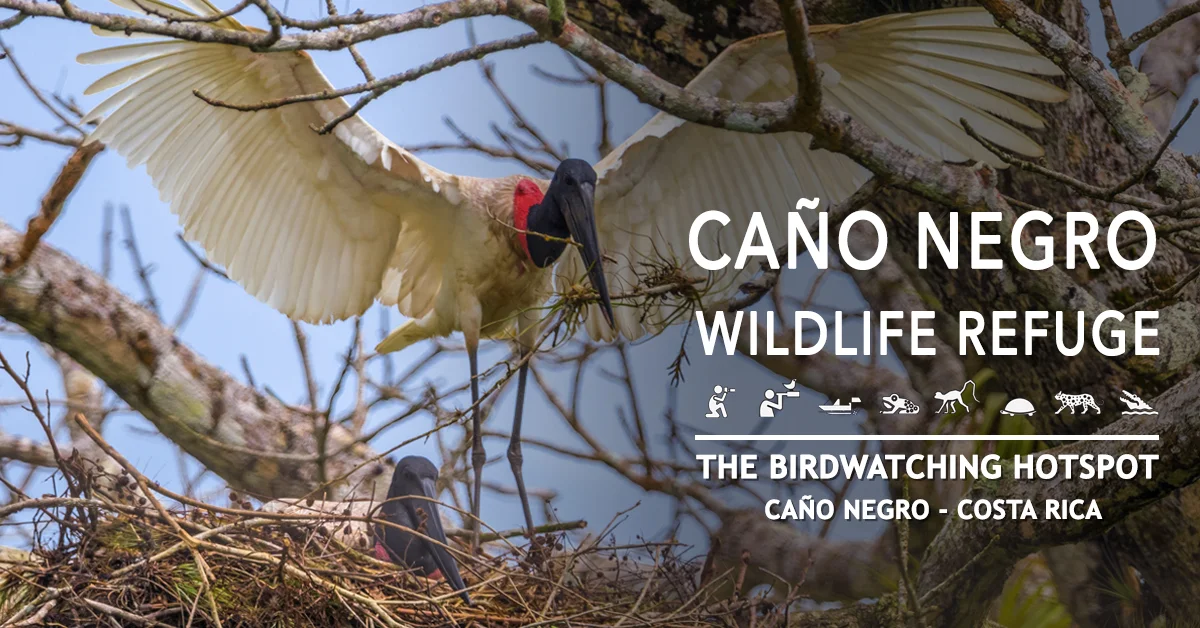
#1 Best Jabiru Birding Package Costa Rica
This prime vacation package for your vacation in Costa Rica is directly offered by Hotel de Campo. After many years of experience, we design this package. Eventually, it becomes the first choice for those tourists that love birding and photography but also like some free time for themself. The more time you spend on a boat tour at Caño Negro Refuge, the more chances you have to spot the bird that you are looking for, or to take the best shot of your vacation.

If you have any other questions about your vacation in Costa Rica and would you like to visit Caño Negro please write to us

Cano Negro Wildlife Refuge Facts
The National Wildlife Refuge Caño Negro location is a very well know destination in Costa Rica for nature lovers who want to spot wildlife, and for birdwatchers / photographers. This is a prime hotspot for wildlife and birdwatching.
For information you can visit: https://www.hoteldecampo.com/
https://birdingcanonegro.com
The National Wildlife Refuge Caño Negro location is on the northern plains of Costa Rica, between Los Chiles and Upala. The road that communicates the National Wildlife Refuge Caño Negro is the 138. from Arenal (La Fortuna) is about 2:30 hrs, From Puerto Viejo de Sarapiquí is about 2:45 hrs, and from Tenorio Volcano about 1:45.
Here you can find a few caño negro costa rica map to follow. If you have any doubt, please contact us.

For an eco-tour vacation, I do recommend bringing clothes that dry fast and wick away moisture, good walking shoes, lots of sunscreen and mosquito repellent, sunglasses, a hat, a microfiber towel, and an insulated water bottle. If you’re visiting in the rainy season, then we recommend bringing a waterproof rain jacket and a waterproof backpack or rain cover.
Cano Negro Wildlife Refuge open is always open, 365 days per year. Just drive there, and enjoy the wildlife.
No, you don’t need to book in advance the entrance for Cano Negro Refuge, but you should book in advance at Hotel de Campo Caño Negro , especially in high season from November to April.
The best time of the year to explore the National Wildlife Refuge Caño Negro does depend on what you are looking for. Eventually, every day is the best time to visit Caño Negro. So let me ask you… What do you expect from Caño Negro? Why would you like to explore Caño Negro Refuge? At the time to decide on visiting Caño Negro, or at the time to ask us about a stay in Caño Negro, this information is very important.

One of the best places to visit in Costa Rica for a nature lover, or a more specialized birder and photographer is Caño Negro Wildlife Refuge . Here you can enjoy special Vacations in Costa Rica birdwatching ecotourism . This is an amazing refuge with a different scenario. We have a lagoons area, a river, and a mostly forest section. This almost unique wetland, allows you to enjoy the different panorama and also switch between animal species: birds, sloths, monkeys, caimans, iguana, and so on.
YES. Rain is part of the ecosystem, and finally, birds and mammals are not very worried about that. In any case, we do offer private tours and specially organized based on your interest. So, when you arrive at Hotel de Campo, we will organize the best moment to go explore the refuge
Yes! Caño Negro and Costa Rica in general are great destinations for family vacations. Caño Negro is a very quiet place, very safe. It is a safe place to discover nature. Also, for families, our tours are always private. So, you will enjoy it for sure. For a family vacation, we offer rooms with up to 3 beds (2 doubles and 1 single bed) and joined rooms. So, you will never be apart, but with privacy.
The currency of Costa Rica is the colon, colones plural.
For the rainy season, a waterproof hiking shoe. Also, and especially for wetland places and rainforests, a good pair of rubber boots. This is what the locals use. They protect you very well from rain and mud. And also, they dry up very fast. During the dry season, very comfortable hiking shoes, always waterproof.
Not really. Costa Rica has only a few main roads, and normally to arrive at some destination, you will not have more than 1 or 2 options. Instead of a GPS, I will use Waze, or Google Maps (not so accurate as Waze). I am sure, that everybody can share with you their location with Whatsapp and Waze.
Looking for a full package?
With Hotel de Campo you can enjoy a Wonderfull vacation in Costa Rica at the National Refuge of Caño Negro, choosing between 6+ packages. Or customize your own.
Made for birdwatcher & photographer
With private tour.
We prepare 3 packages from 2 to 4 nights, with up to 15 hrs of private birding and photography tour. You can customize this vacation packages.
Made for nature lover
Sharing tours.
We prepare 3 vacations packages from 1 to 3 nights, that include up to 5 hrs of boat tours in Caño Negro. This packages doesn’t include private trip, but you can upgrade it
Table of Contents
WhatsApp us
Costa Rica’s Keys to Success as a Sustainable Tourism Pioneer
How the country went from a deforestation crisis to becoming a global leader in sustainability
- Chapman University
OGphoto / Getty Images
- Sustainable Fashion
- Art & Media
In 2019, Costa Rica was named “ Champion of the Earth '' by the United Nations for its direct role in protecting nature and fighting climate change. The country, which is home to just over 5 million residents, was already known as a world leader in sustainability for putting environmental concerns at the forefront of its political and economic policies.
Over 98% of Costa Rica’s energy has come from renewable sources since 2014 (in 2017, the country ran a full 300 days solely on renewable power) and 70% of all public transport is expected to turn electric by 2035. Through a combination of protected areas, ecosystem services programs, and ecotourism, Costa Rica has successfully restored its forest cover from 26% in 1983 to over 52% in 2021 — proving to the rest of the world that reversing deforestation is possible with the right approach.
Where Is Costa Rica?
Costa Rica is located in Central America, between Nicaragua and Panama. It is known both for its stable, democratic government (the country hasn’t had an army since 1948) and for its incredible natural beauty. A whopping 25% of its territory is comprised of protected lands , ranging from tropical rainforests and rugged mountain ranges, to stunning coastlines and volcanic landscapes.
What Sets Costa Rica Apart?
Central America and the rest of the tropics are full of rich biodiversity and thriving tourism industries, so what exactly sets Costa Rica's approach to sustainable tourism apart?
“Our sustainable tourism model has allowed us to seek and attract niche groups of travelers that recognize our differences and the quality of experiences in the country,” Costa Rica’s Tourism Minister Gustavo Segura Sancho tells Treehugger. “The key to success has been to target a demand that can adapt to the conditions the country has to offer.”
Kahj19 / Getty Images
The country contains more than 6% of the world’s biodiversity despite covering only about 0.03% of the surface of the globe. Housing so much biological variety doesn’t just make Costa Rica a dream location for nature lovers, it also makes the country especially vulnerable to climate change.
“Despite being a small developing country, Costa Rica has decades of sustainable tourism efforts underway,” says Segura Sancho. “Our work involves the efforts of individuals and organizations throughout Costa Rica’s public and private sector and demonstrates a unified commitment to protecting not only our environment and economy, but that of the world.”
Sustainable Destination Development
Kryssia Campos / Getty Images
The country’s tourism model was developed with three primary factors in mind: sustainability, innovation, and inclusiveness. Costa Rica's tourist attractions focus on activities that respect the environment and offer travelers opportunities to reduce their carbon footprint and contribute to conservation and cultural heritage.
The Costa Rican Tourism Institute (ICT) developed a country-wide Certification for Sustainable Tourism back in 1997, which provides tourism companies with guidelines to manage their business sustainably. The certification program educates local companies on the appropriate use of natural and cultural resources, and provides visitors with an official "CST mark" to identify sustainable tourism operators, accommodations, and attractions. As of 2021, over 400 companies in Costa Rica are sustainably certified, and the program has even been recognized by the Global Sustainable Tourism Council and the United Nations World Tourism Organization .
Focusing on long-term sustainability within the tourism industry involved a few risks, for example by making the country a bit more expensive to visit. In the years since the tourism model’s development, surveys have shown that 63% of United States travelers are more likely to consider destinations making an effort to conserve and protect natural resources, while 75% are more likely to consider sustainable destinations. And a study published in the Proceedings of the National Academy of Sciences found that, by the year 2000, protected natural areas in Costa Rica reduced poverty in neighboring communities by 16% by encouraging ecotourism. It would appear that the country’s decades-long investment in sustainable tourism was a good one.
Sustainable Destinations in Costa Rica: Arenal and Monteverde
Kevin Schafer / Getty Images
Established in 1991, Arenal Volcano National Park protects 29,850 acres and at least 131 species of mammals, including monkeys, sloths , coatis , and jaguars , along with the 5,757-foot Arenal Volcano.
An example of sustainable management in the community, locally owned Arenal Observatory Lodge maintains 270 acres of natural forest and 400 acres of reforestation areas. The hotel donates food waste to local farms as feed for animals, uses biodegradable cleaning products, and contributes to several nonprofit community projects.
Just a few hours away, you’ll find an estimated 50% of Costa Rica’s biodiversity in the Monteverde Cloud Forest Biological Preserve . The preserve is run by the Tropical Science Center, a historic non-government environmental organization that has pioneered conservation efforts, research, ecotourism, and sustainable development initiatives throughout the country.
Manuel Antonio National Park
Mark Downey / Getty Images
A relatively small stretch of Costa Rica’s central Pacific coast home to iguanas, toucans, and monkeys , Manuel Antonio was one of the country’s most visited national parks. In an effort to curb pollution and other consequences of overtourism, the park now limits the daily number of visitors to 600 on weekdays, 800 on weekends and holidays, and completely closes the park once a week. The park was awarded the ICT Elite Certificate of Sustainable Tourism in 2021.
Tortuguero National Park
Located on Costa Rica's north Caribbean coast, Tortuguero boasts the largest green turtle nesting site in the Western Hemisphere. Working alongside the Sea Turtle Conservancy , one of the world's oldest international nonprofits focusing on sea turtles, community stakeholders helped fund the Tortuguero Visitor Center in 1959 to help share information with visitors and locals about threats to sea turtles and their ecosystems. The park protects 46,900 acres and focuses on sea turtle research, also offering a Junior Research Assistant Program for local high school students and educational workshops for younger students.
When's the Best Time to Visit Costa Rica?
Most tourists visit Costa Rica during its high season from November to April to enjoy the sunny, dry weather. However, this time of year can also result in higher costs and overcrowding (which can be harder on the environment). Booking a trip during the shoulder season or low season from May to November also has its advantages, from cheaper accommodations and flights to greener surroundings. Plus, off season is typically when locals who rely on the tourism industry struggle the most, so supporting the economy during this time is a major perk. Keep in mind that Costa Rica has a variety of microclimates, so it's best to consider your specific travel destinations and priorities when researching weather.
The Four Pillars of Sustainable Tourism
By definition, sustainable tourism should not only consider its current economic, social, and environmental impacts, but its future effects as well. This is often achieved by protecting natural environments and wildlife while managing tourism activities, providing culturally authentic experiences for visitors, and creating economic benefits for the local community. According to the Global Sustainable Tourism Council , the four pillars of sustainable tourism include sustainable management, socioeconomic impacts, cultural impacts, and environmental impacts. Costa Rica is a shining example of a destination that prioritizes all four of these aspects successfully.
Sustainable Management
Part of the reason why the ICT’s Certification for Sustainable Tourism standards program has become so successful is because of the multiple certification levels it offers. The tiers inspire tourism attractions and tour operators to work harder in strengthening their sustainability practices in order to work their way up. It has become a model for other countries setting sights on sustainability within their own tourism industries.
In order to diversify the tourism industry, the Costa Rica tourism authority also launched an Integral Management of Tourism Destinations program in 2018, with the goal of helping in the development of 32 tourism centers around the country.
Socioeconomic Impacts
Using a Social Progress Index (SPI), the ICT measures the wellbeing of tourism communities across the country. The SPI considers factors like quality of life, basic human needs, level of opportunities, and social welfare rather than gross domestic product (GDP) or other economic variables, something Segura Sancho says will ensure that tourism remains a positive force for development. “Through the SPI tool, the ICT has discovered the positive effects that our sustainable tourism model has had on local communities, including access to higher education, job opportunities, air quality and waste management, quality of life, improvements in safety and community support networks, women's empowerment, among many others.”
The program also leaves room for plenty of innovation, like the establishment of one of the country’s newest national parks on San Lucas Island . Once containing a wildlife refuge and a former prison building housing some of Costa Rica’s worst criminals, the 1.8-square-mile island is now a cultural heritage and hiking site. Tourists can visit the island to enjoy the vibrant wildlife and take tours hosted by local guides, a feature that has greatly contributed to the area’s socioeconomic development. The ICT also supports the Code of Conduct for the Protection of Children from Sexual Exploitation in Travel and Tourism — an initiative of the World Tourism Organization.
Environmental Impacts
Along with the Certification for Sustainable Tourism, the ICT has also implemented several other programs to encourage and enforce environmental sustainability across the tourism sector. The Ecologic Blue Flag Program , for example, evaluates Costa Rica’s beaches on criteria like ocean water quality, waste disposal, sanitary facilities, environmental education, and community involvement in beach maintenance. Only beaches that succeed in maintaining 90% of the strict criteria receive a distinction and an official Blue Flag to display on the beach. The ICT also advocates for coastal planning and supports programs for small businesses and destination management.
Cultural Impacts
Community tourism, which gives visitors a chance to support indigenous communities, meet local people, and experience authentic cultural heritage, is a growing movement in Costa Rica. Especially in the capital city of San Jose, there are numerous opportunities for tourists to learn about Costa Rica’s architecture, artwork, history, and food. San Jose tourists can purchase a discounted single ticket to visit three of the country’s most popular museums , all within walking distance from each other: the National Museum of Costa Rica, the Museum of the Central Bank of Costa Rica, and the Jade and Pre-Columbian Gold Museum. The ICT also provides resources and maps for self-guided walking tours of the country’s main cities and information on where to find traditional Costa Rican cuisine .
A Commitment to the Environment
In early 2021, the Costa Rica National Forest Financing Fund (Fonafifo) and the ICT launched a carbon footprint calculator to help visitors determine their trip’s carbon footprint and contribute to corresponding carbon offsets. Donations to this program are used to strengthen forest conservation efforts in Costa Rica.
Among other long-term targets, Costa Rica’s National Decarbonization Plan puts the country on track to achieve net zero emissions by 2050 , in line with the Paris Climate Agreement and the UN’s Sustainable Development Goals. Although 98% of the country’s electricity already comes from renewable sources, the plan aims to power 100% of the country’s public transport with electricity by 2050. President Carlos Alvarado Quesada’s Administration plans to work with individuals from both the public and private sectors, scientists, and other industry experts to make this vision a reality.
Establishing parks and refuges in Costa Rica — which now numbers 30 national parks, 51 wildlife refuges, and nine biological reserves — has generated responsible tourism and funded conservation efforts in parts of the country that otherwise may have gone overlooked by visitors. Although a full 25% of Costa Rica is officially zoned as protected territory, local appreciation for nature encompasses the entire country.
“Sustainability has long been embedded in the culture and traditions of Costa Rica,” Segura Sancho explains. “From an early age, children are taught to protect the country’s forests and wildlife, and to appreciate the diverse landscapes and natural beauty that the country has to offer. This inherent love of our surroundings means we want to conserve its many species of animals, insects, trees and birds for decades to come.”
" Renewable Energy - Costa Rica ." International Trade Administration.
" Environment ." Embassy Of Costa Rica In Washington DC.
" Why ‘Going Green’ Pays Off: Sustainable Practices Drive Destination Choice For A Majority Of Travelers, New Research Unveils ." Sustainable Travel International , 2016.
Ferraro, P. J., and M. M. Hanauer. " Quantifying Causal Mechanisms To Determine How Protected Areas Affect Poverty Through Changes In Ecosystem Services And Infrastructure ." Proceedings Of The National Academy Of Sciences , vol. 111, no. 11, 2014, pp. 4332-4337., doi:10.1073/pnas.1307712111
- What Is Ecotourism? Definition, Examples, and Pros and Cons
- What Is Sustainable Tourism and Why Is It Important?
- 8 Unreal Treehouse Escapes
- 3 More Rules for Sustainable Tourism
- What Is Voluntourism? Does It Help or Harm Communities?
- What Is Community-Based Tourism? Definition and Popular Destinations
- Regenerative Travel: What It Is and How It's Outperforming Sustainable Tourism
- How to Become a Geo-Traveler
- How to Be a Sustainable Traveler: 18 Tips
- What Is Overtourism and Why Is It Such a Big Problem?
- What Is Experiential Tourism?
- 15 Travel Destinations Being Ruined by Tourism
- 8 Incredible Rainforest Destinations Around the World
- Top 8 Agritourism Destinations in the World
- What's Special About the Faroe Islands
- 'Scattered Hotels' Are Saving Historic Villages in Italy and Beyond
Las Pilas de Alajuela, Costa Rica

- Testimonial
- Specialize in Family Vacations

Rural Tourism in Costa Rica
RURAL TOURISM IN COSTA RICA
Rural tourism in Costa Rica is relatively new. It is designed for tourist who want a true Costa Rican cultural experience as well as adding some adventure to the experience. In other words a mix of adventure and culture.
So we call it Rural Tourism with a “ spice of Adventure.”
First , participating in rural tourism in Costa Rica you will learn what a real Costa Rica rural community is like. Schools, police, delivery of health care, neighborhoods, and of course the people.
You will learn why Costa Ricans are known as “the happiest people on earth.”
Lindsey Padilla, creator therealcostarica .net, says it so well.
I quote Lindsey:
“ Our intention is to present the real Costa Rica to you, and to show what is essential to us here in the countryside:
Our luxury may be different from your luxury…
We have no air conditioning, we have fresh and still pure air.
We have no a swimming pools at home, we have clean rivers in our village.
We have no big and amazing houses, we have big wishes to share our amazing lifestyle.
We have no expensive rugs or furniture, we have green yards sorrounded by flowers where you can rest and admire the creation.
We have no cinema or theater in town, we have many beautiful landscapes to observe and enjoy.
Not everyone has internet in home, we are always personally close to family and friends.
We don’t have new cars, we are thankful with God because we can walk.
Our kids have no expensive toys, they spend the day discovering species around (frogs, buttterflies, birds…) They collect smiles for sharing with everyone who accept to get into their world: soccer games, hide and seek, and games like these…
What we call “luxury” is to open our doors to share what we really are… From now and then… Welcome to “The Real Costa Rica! “
10.255.150.253/costaricalearn voice will tell you: A Rural Adventure -Cultural Tour could consist of the following:
Lunch with a Costa Rican Family, learn about the food -how it is grown and prepared. Food is always fresh-usually no preservatives added. Some may be grown organically.
Visit a rural school. Talk to the students and the teachers.
Homestay with a real Costa Rica family. Learn what “Pura Vida” means (pure life). Practice your Spanish or take Spanish classes.
Visit the police station, talk to the police. Costa Rica has no standing army since 1948. Citizens do not usually own firearms unless they live in an area where wild animals are a danger.
Tour a natural medicinal garden. Learn about the plants and their curative properties.
When possible visit an indigenous group-dances, language, food, art.
Hike in a rainforest, get into a natural hot springs, see monkeys, iguanas, sloths.
Early morning bird watching. There are hundreds of colorful tropial birds.
The Costa Rican government is doing a great deal to promote rural tourism. The governmental agency “Institute for Rural Development” INDER is providing assistance to rural communities to establish tours such as: “Route of the Blue River” in North Eastern Costa Rica. Here is the home to the indigenous people-The Maleku. A rural tour here would hike along the blue river and then visit the Makelu Village. See how they live. What they eat, how they educate their children, what is their native language, how do they government their community?
Would you like to include in your vacation to Costa Rica a “Rural Tourism” experience.
You can do so by contacting Ann Cabezas Creed owner of the travel company www.costaricalearn.com [email protected]
Share this:
Recent posts.
- Climate Change Negative Effects Costa Rica
- Costa Rica Received Champion of the Earth Award
- Family Vacation to Costa Rica’s Arenal Volcano National Park
- Costa Rica’s Blue River
- Tamarindo Beach Sun, Surf, and Sandals
- Renting a car in Costa Rica – Things you should know
- Costa Rica Vacation Planning by Ann the Costa Rica Expert
- Denise Simms Writes about Xinia’s Costa Rica Vacation Homestay
- Costa Rica National Parks about The Entrance Fees
- Latin America News
- Art and Culture
- Science and Tech
- Classifieds

COSTA RICA'S LEADING ENGLISH LANGUAGE NEWSPAPER
Unions and Students March in San José for Education Funding
Costa rica joins global rejection of venezuelan vote, air pollution in san josé surpasses mexico city, raising alarm bells, costa rica proposes groundbreaking law to combat noise pollution, the forgotten helicopter: a glimpse into costa rica’s osa peninsula logging past, rural tourism in costa rica’s pérez zeledón.
Pérez Zeledón is in the southern region of Costa Rica. It’s known for being home to Cerro Chirripó and Los Crestones. However, this area offers a wide range of rural tourism activities that national and international tourists can enjoy throughout the year.
Jorge Fallas, president of the Chamber of Rural Experiences, mentioned that the growth of rural tourism in Pérez Zeledón is remarkable.
He explained that the solidarity of the families involved in the tourism business is outstanding, as they offer authentic tourism activities that preserve the cultural values, traditions, and natural resources of a destination with great potential.
According to the ICT’s Cultural Tourism Guide of Pérez Zeledón (soon to be launched), the area of Pérez Zeledón is a region with agricultural roots and still dominates the local economy.
“We invite everyone to visit Pérez Zeledón and discover all it offers. We’re close to Dominical Beach (less than 30 minutes away). We have varied microclimates that generate a great variety of flora and fauna safeguarded by many protected areas and some biosphere reserves, bird-watching sites, and a variety of rural tourism alternatives.
These activities have allowed many families to find opportunities for economic growth. Precisely, for these and other reasons, we recently launched the campaign Come to Perez,” said Gregory Lopez, coordinator of the Tourism Management Office of the Municipality of Perez Zeledon.
Those who visit the area can also enjoy horseback riding, oxcart and buffalo rides, and interactive tours at “La Molina” Farm.
The handicraft store “Mujeres del Valle” offers a wide range of unique products from the Brunca Region. This an example of female empowerment, as dozens of women entrepreneurs joined together to sell various products and regional cuisine, thus creating the business.
In addition, Pérez Zeledón stands out for the quality of its coffee. The Granados Farm and Coffee Shop is an example of extraordinary coffee. It allows tourists to enjoy a tour that concludes with gourmet- coffee tasting.
For those who would like a less challenging hike at the Chirripó National Park , the Rural Tourism Association of Cerro Ena reorganizes and offers new access to Cerro Chirripó, passing through the Sabana de Los Leones with the support of experienced guides and muleteers. It’s also possible to visit Cerro Ena.
Pérez Zeledón is an ideal rural tourism area for those who seek adventure and practice ecotourism and discover new areas of Costa Rica.
Weekly Recap
Costa rica weekly recap news recap for august 25, 2024.

Latest Articles
Driving in costa rica: the perils and peculiarities on the road, costa rica’s hitoy cerere reserve welcomes back visitors, costa rica’s soccer league leads central america with var implementation, costa rica’s housing market fails to meet the needs of most households, honduras ends us extradition pact to protect government from alleged coup, celebrate afro-costa rican culture at limón’s gala grand parade, save the children among 169 ngos shut down by nicaragua.

Places to visit: ➣ Palmichal de Acosta ➣ Manuel Antonio ➣ Chira Island ➣ Bagaces ➣ Tamarindo
Main attractions: ➣ Lots of wildlife (flora and fauna) ➣ Direct contact with the hosting people and shearing experiences in each rural lodging ➣ Corcovado National Park ➣ Manuel Antonio National Park ➣ Hiking in the active crater of Miravalles Volcano ➣ Tamarindo beach
Price: US $1,235 per person. Could change depending on seasons.
This tour includes:
✓ Airport transfer - hotel and assistance ✓ 1 night at San Jose hotel ✓ 2 nights in basic and rural lodging in Palmichal ✓ 2 nights at Manuel Antonio hotel ✓ 1 night in basic and rural lodging in Chira Island ✓ 2 nights in basic and rural lodging in Bagaces ✓ 2 nights at Tamarindo hotel ✓ Daily breakfast ✓ Three daily meals in Palmichal, Chira Island and Hornillas ✓ Rented car 4x4 ✓ Included and detailed activities in the rural areas ✓ Service and hotel taxes ✓ Price US $ 1,235 per person. Could change depending on seasons.
This tour DOESN'T includes:
➣ Meals and drinks not specified in the itinerary ➣ Optional Tours ➣ Local and international calls ➣ Personal medical expenses ➣ Car rental insurance ➣ Departure taxes (US$29 per person) ➣ Air tickets from and to Costa Rica
Travel Itinerary
DAY 1: ARRIVAL TO COSTA RICA Reception at the airport and transfer to the hotel in San José. Accommodation.
DAY 2: SAN JOSE – PALMICHAL Breakfast. Departure to the town of Acosta in San Jose province. We will make a visit in route to the community of Quitirrisi where we will learn a little of their manual artisan activity of indigenous tradition.
The community of Quitirrisí is an indigenous community that is located to the West of San Jose. We will visit a four women family who have dedicated themselves to making baskets using authentic designs and natural materials of many colors of the Huetar indigenous culture. During the last 50 years, their craftsmanship has passed from generation to generation.
Arrival at Palmichal. Accommodation in Rural Lodge.
Nacientes Palmichal is a community rural tourism project that was born with the main goal of protecting the waters and forests of the Nacientes Palmichal Basin formed by the Negro and Tabarcia rivers, to bring to the population habits and customs of protection and conservation in harmony with the natural environment.

DAY 3: ACTIVITIES INCLUDED Early departure for the full day Tour Rural Experiences in Palmichal. We start towards Casa Campesina Los Toritos, which is an initiative of coffee producing local Family. In the gardens we can observe bromeliads, orchids and tomato sticks. Here you can also see the coffee plantation, an agroforestry crop and fruit trees with beautiful views. The family will share their experience for the management and maintenance of coffee as well as the artisan process to taste it. We will enjoy a typical breakfast with freshly coffee prepared with an artisan way, and delicious tortillas. After breakfast we will start a 45-minute walk, 1.7 km, to a cattle farm with sustainable activities where you can see how cheese is made by hand. The waste management of the animals is carried out through a biodigester producing biogas and bio-fertilizer. We will have the opportunity to feed the goats, sheep, calves, chickens, rabbits and even milk a cow. In this beautiful journey along the river of crystal waters, you will enjoy the great biodiversity and variety of fruits of the area. Then we will go back to Posada Rural Nacientes Palmichal where you will enjoy a delicious lunch, very popular in Costa Rica known as "Olla de Carne", although there are also options for vegetarians and vegans. In the afternoon and at the end of this experience, we will enjoy an artisanal coffee in the typical kitchen of the Posada with a delicious cheese omelette. And if you want to try your skill you can prepare homemade bread in the oven and prepare your own coffee!

DAY 4: PALMICHAL – MANUEL ANTONIO Breakfast. Departure to Manuel Antonio in the Central Pacific. Accommodation.
DAY 5: MANUEL ANTONIO Enjoy a day of beach and nature within the Manuel Antonio National Park. It is one of the smallest and most popular national parks in Costa Rica. In Manuel Antonio you can enjoy a relaxing day on one of the four beaches or take a walk through the vibrant green tropical jungle. From natural pools of sea water with crustaceans to species of monkeys in danger of extinction and impressive panoramic views. In addition, you can enjoy other exciting activities such as rafting Tour, Sailboat Tour, boat ride or Kayak in the Isla Damas Estuary, Dolphin Tour, or take a paragliding tour on the beach. Accommodation.

DAY 6: MANUEL ANTONIO – ISLA CHIRA Breakfast at the hotel. Departure to Costa de Pájaros in Puntarenas to take a boat that will take us to the Chira Island. Arrived at Puerto Bocana and starting a unique journey in the bus of the town that will leave you at the lodge. Accommodation at La Amistad Rural Lodge.

La Amistad Ecotourism Association is made up of brave women who decided to face the fear in order to achieve their dreams of improving the quality of life both their families and throughout Chira Island. They got an empowerment of their own ideas that allowed them to have the freedom to develop so many skills, take a boat management course and be captain of their boats. They had the courage to build La Amistad Rural Lodge and be able to offer the services that the visitors need. Through the tours the ladies of Isla Chira do they watch the mangroves and take care of the ecosystem. Take the first step was the most difficult because they had to convince the other women to form the organization. That women lead the community was not good look in our culture. Nowadays, in addition to the tourist activities of the lodge, this group of women carries out reforestation and fire prevention projects. If at the beginning the project was badly seen by the community, nowadays and thanks to their hard work and good management practices, they have shown that it was possible to bring real benefits to the community thanks to rural and sustainable tourism.
DAY 7: MORNING ACTIVITY IN CHIRA ISLAND Breakfast at the hostel. Departure in the morning for the Mangrove Tour. Accompanied by a local guide, departure by boat to observe the impressive mangrove forest that hosts five of the seven species found in Costa Rica. We will pass by the Responsible Fishing Marine Area where we can see the fishermen with their ropes doing their daily tasks. During the tour and with a little luck we can see crocodiles and exotic bird species. Return to the lodge for lunch. Departure to the pier to board boat back to Costa de Pájaros.

Departure from Costa de Pájaros to Las Hornillas in Bagaces, Guanacaste. Accommodation.
Las Hormillas is a family project that is a place considered a natural treasure since it has a natural spa, geological attractions and the pailas that are in constant activity by the Miravalles Volcano. In this sector it is possible to observe the active crater of the volcano. The burners are holes that clay mud with temperatures that oscillate 80 ° C - 100 ° C and 200 ° C.
DAY 8: LAS HORNILLAS ACTIVITIES Breakfast. In the morning departure to make the Tour to the Falls and the Cerro Cabro Muco in tractor or horse. During the tour we will pass through three hanging bridges. One of the bridges of 40 meters in length facing an impressive waterfall, another 100 meters in length with a view of the primary forest that surrounds us. Within the trails that we will walk we can see a variety of animals such as birds and reptiles. We will visit a total of 3 waterfalls where you can enjoy a refreshing swim when you reach the well known as "Poza escondida". Return to the Lodge.
In the afternoon we will have the Tour inside the active crater, observing the burners, the pailas in which temperatures oscillate between 40 to 120 degrees centigrade, hot stones, fumaroles, crystallized sulfur and the heart of the volcano. At the end of the tour we can enjoy mud bath in natural spa, relaxation time in the pools with thermal water volcanic. Accommodation.

DAY 9: LAS HORNILLAS – TAMARINDO Breakfast. Departure to Tamarindo beach. Accommodation.
DAY 10: TAMARINDO Enjoy a day of beach and nature in the Tamarindo area. You can enjoy a relaxing day at one of the most beautiful beaches in Costa Rica. In addition, you can enjoy other exciting activities such as Tour in Catamaran, horseback riding on the beach, diving tour in Catalinas Island, Snorkelling Tour among other activities. Accommodation.
DAY 11: RETURN Breakfast at the hotel. Departure to Juan Santamaria International Airport.
Travel with us!
Write us for more information:
Subscribe to our newsletter:
Much to explore.
World Tourism Organization and IICA to strengthen rural tourism in Latin America and the Caribbean

San Jose, 1 de noviembre 2019 (IICA). The Inter-American Institute for Cooperation on Agriculture (IICA) signed an agreement with the United Nations World Tourism Organization (UNWTO) to bolster assistance in the areas of agrotourism and rural tourism in the Americas.
The institutions signed the agreement during the 2019 Conference of Ministers of Agriculture of the Americas in San Jose, Costa Rica, which will end on 31 October.
The UNWTO and IICA will implement projects to promote capacity development in areas such as positioning and destination branding in rural tourism, development and diversification of products and digital skills, with financial assistance from international agencies.
Zurab Pololikashvili, Secretary General of the UNWTO remarked that, “We recognize the historic value of the agriculture and tourism synergy and the partnership with IICA will be critical to enhancing the opportunities offered by this relationship in the coming years”.
As a first joint initiative, the organizations intend to advocate for the declaration of 2020 as the International Year of Agrotourism and Rural Tourism.
Director General of IICA, Manuel Otero, insisted that, “We must find synergies between other key actors to bolster our efforts to tackle the trade, climate and social challenges facing agriculture in our 34 Member Countries”.
“We are very pleased with the launch of this partnership, which will allow us to strengthen the relationship between agricultural producers and the tourism sector that utilizes their products”, said Michael Pintard, Minister of Agriculture and Marine Resources of The Bahamas, who participated in the San Jose conference.
The imbalance between the volume of food that is produced versus what is imported is a situation that is affecting Caribbean countries, where tourism is one of the major sectors of the economy.
More information:
Institutional Communication Division, IICA

Destinations
Bali Classic – 12 Day Tour
Costa Rica Classic – 12 Day Tour
India Snapshot – 6 Day Tour
India Classic – 14 Day Tour
India Nepal Expedition – 20 Day Tour
Tokyo Snapshot – 4 Day Tour
Osaka Hiroshima Snapshot – 6 Day Tour
Japan Essentials – 9 Day Tour
Japan Essentials – 13 Day Tour
Japan Classic – 10 Day Tour
Japan Classic – 14 Day Tour
Japan Winter Classic – 11 Day Tour (+Ski)
Morocco Classic – 11 Day Tour
Nepal Snapshot – 7 Day Tour
PHILIPPINES
Philippines East Classic – 10 Day Tour
Philippines West Classic – 10 Day Tour
Philippines West Classic – 14 Day Tour
Philippines Expedition – 23 Day Tour
SOUTH KOREA
South Korea Snapshot – 6 Day Tour
South Korea Essentials – 10 Day Tour
South Korea Classic – 10 Day Tour
South Korea Classic – 13 Day Tour
Sri Lanka Classic – 12 Day Tour
Bangkok Snapshot – 4 Day Tour
Thailand Classic – 10 Day Tour
Thailand Expedition – 18 Day Tour
Thailand Expedition – 20 Day Tour
North Vietnam Snapshot – 7 Day Tour
Vietnam Classic – 12 Day Tour
Vietnam Classic – 15 Day Tour

See all tour options
Costa Rica & Thailand – Earlybird 20% Discount

Discover the Wonders of Eco-Tourism in Costa Rica
Sep 4, 2024 | Costa Rica , OLA Giving Back
Costa Rica is a paradise for eco-conscious travellers, nature enthusiasts, and adventure seekers. This small Central American nation packs an incredible punch when it comes to biodiversity and sustainable travel. With lush rainforests, active volcanoes, and pristine beaches, Costa Rica offers unparalleled opportunities for eco-tourism. In this article, we’ll explore the benefits of eco-tourism in Costa Rica and highlight an enriching 12-day itinerary that features adventure, conservation, and community.
Why Choose Eco-Tourism in Costa Rica?
Rich biodiversity.
Costa Rica is home to approximately 5% of the world’s biodiversity, despite covering only 0.03% of the planet’s surface. This makes it an ideal destination for nature lovers who want to experience diverse ecosystems, including tropical rainforests, cloud forests, and marine habitats.
Sustainable Travel
Costa Rica is a leader in sustainable tourism. The country’s commitment to environmental conservation and responsible travel practices ensures that your visit will help protect natural resources for future generations.
Support Local Communities
Eco-tourism in Costa Rica often involves supporting local communities through conservation projects, cultural experiences, and eco-friendly accommodations. By choosing eco-tourism, you contribute to the economic well-being of local residents and help preserve their way of life.
Benefits of Eco-Tourism in Costa Rica

Conservation Efforts
Participating in eco-tourism activities directly supports conservation projects, such as trail maintenance in Monteverde and wildlife protection programs in La Fortuna. Your involvement helps preserve Costa Rica’s natural habitats for future generations.
Cultural Exchange
Eco-tourism provides opportunities for meaningful cultural exchange. Activities like cooking classes and visits to local farms allow you to connect with Costa Ricans and gain a deeper understanding of their traditions and way of life.
Personal Growth
Adventure travel and eco-tourism can be transformative experiences. Whether you’re ziplining through the rainforest or volunteering at a conservation lodge, these activities challenge you to step out of your comfort zone and grow as an individual.
Community Support
By choosing eco-tourism, you support local economies and empower communities. Many eco-tourism initiatives in Costa Rica are community-driven, ensuring that the benefits of tourism are felt by those who live there.
Join the Movement for Responsible Travel

Eco-tourism in Costa Rica offers a unique mix of adventure, conservation, and cultural immersion. By choosing to travel responsibly, you can experience the wonders of Costa Rica’s biodiversity while making a positive impact on local communities and the environment. Ready to explore the natural beauty of Costa Rica and give back to its communities? Book your 12-day Classic tour with One Life today and join the movement for sustainable travel.
Happy travels and pura vida!
Bali Costa Rica Food & Drinks India Indonesia Japan Morocco Nepal News & Events OLA Giving Back Philippines Popular Reads South Korea Sri Lanka Travel Tips Vietnam
Recent Posts

From Sandy Beaches To Lush Rainforests, These Are The Best Places To Visit In Costa Rica
Costa Rica is a beautiful Central American nation loaded with art, culture, and tons of fascinating biomes to explore.
Teejay Small • Sep 6, 2024
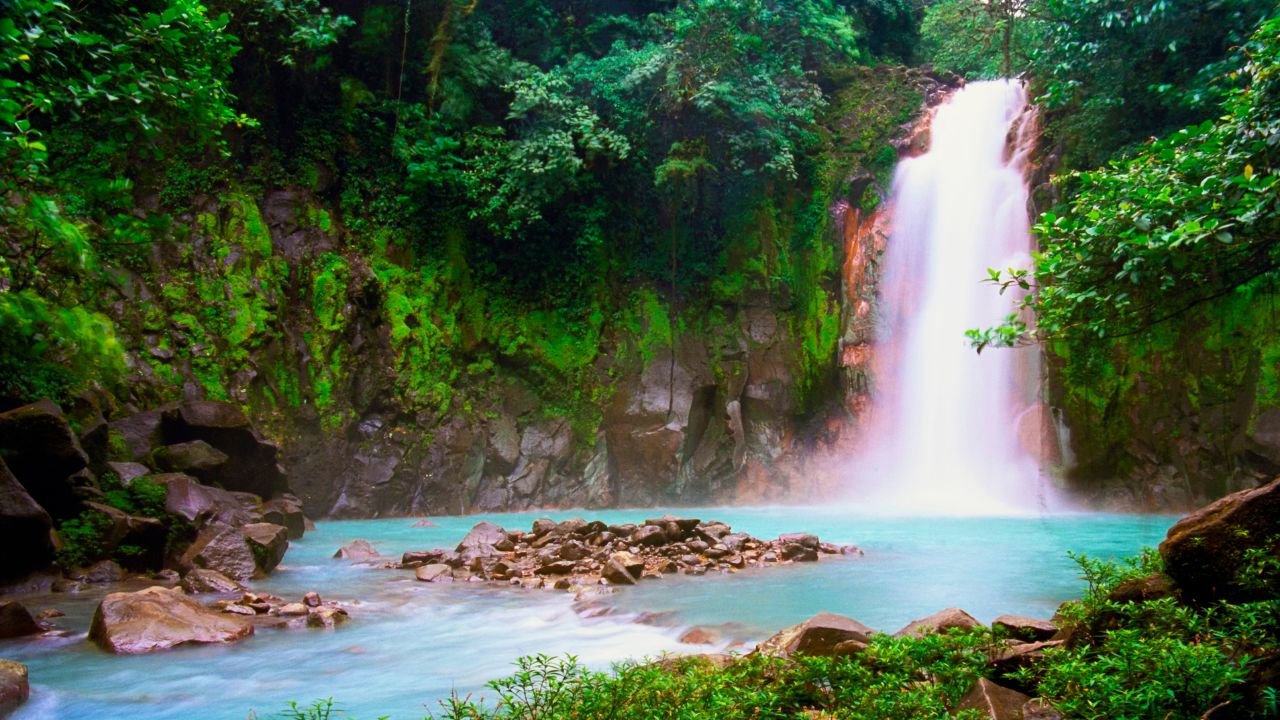
Costa Rica is one of the most beautiful countries in the world, with a wide array of activities, day trips , and diverse biomes for tourists to explore. From lush forests, sandy beaches, and active volcanoes where the magma flows like water, Costa Rica encourages you to explore the beautiful countryside. Enjoy spending time kicking your feet up and sipping a cool beverage directly out of a coconut. Whether you’re visiting the exciting Central American locale for a weekend, a month, or a year, you may feel overwhelmed by the sheer number of bucket list items you’ll incur along the way.
Luckily, we’ve got you covered, with a brief but thorough list of the rain-forested nation’s greatest highlights. You can head out on thrilling excursions like the world’s longest zip-line or kayaking through the mangroves, or something more laid back like a tour of a cacao farm. There are plenty of activities available to help you make the most of your time on your trip. Without any further preamble, let’s dive directly into the list. We’ll get you started on a bullet-proof itinerary that will make your vacation in Costa Rica the best trip you’ve ever taken.
View this post on Instagram A post shared by Radikal Zee (@radikalzee)
Chances are, if you’re going to Costa Rica, you’re already expecting to hit the capital city of San José. This vibrant cultural hub serves as the epicenter of the nation’s tourism, providing tons of excellent museums, high-end restaurants, and safe hotel stays for visitors from around the world. While navigating the streets of San José, be sure to take in different samples of the country’s finest cuisine in between downtown strolls, dance lessons, and a few sightseeing stops. The city is located in a green and vibrant basin surrounded by large, imposing mountains. It offers some impeccable scenery for those interested in touring the diverse ecosystem throughout San José and beyond. Bucket list items for a day-trip through the city include indulging in some locally-sourced coffee and some flavorful empanadas, as well as checking out the Toucan Rescue Ranch just outside of town.
View this post on Instagram A post shared by 范中流 (@15mklpp)
If you’re looking to stray away from the luxurious offerings of the city and find something a bit more rural, you’ll certainly want to take a day trip to the Caño Negro district of Alajuela Province. This wetland area, which is situated near the Nicaraguan border, is a roughly 4-hour car ride from San José, and offers an incredibly diverse network of rivers, forests, and wildlife preserves . Animal lovers can keep an eye out for rare species’ such as the giant anteater, emerald basilisk, and Jabiru stork, while nature lovers can take in the fresh, humid air of the flooded wetland forests. Just remember to keep a careful eye on your surroundings, as you never know when a dangerous creature such as a jaguar or a fully grown caiman could be creeping up behind you.
Caño Negro is also home to a number of boat tours, for those who aren’t as confident in their navigation skills as the Crocodile Hunter. These guided trips through the wilderness allow visitors of Costa Rica to immerse themselves in the unique wilderness without needing to stress the finer details of their day-trip to Caño Negro.
Guanacaste Coast
View this post on Instagram A post shared by Costa Rican Vacations (@costaricanvacations)
While it’s always a blast to take in the beautiful scenery of a foreign nation, maybe you’re not the type who enjoys wrestling their lunch from the jaws of a terrifying reptile. Luckily, Costa Rica is positively loaded with beautiful landscapes for you to explore, that don’t require you to be an overt animal lover to enjoy. One such region is the Guanacaste Coast, where golden sand beaches give way to crashing ocean surf, perfect for a relaxing day at the beach. Like the Caño Negro district, the Guanacaste Coast is a solid handful of hours by car outside the city, though you certainly won’t regret making the effort to get there.
At the Guanacaste Coast, the turquoise water of the North Pacific provides excellent space to wade, swim, and surf, while the clean beaches offer some ideal real estate for relaxation. Those who love to remain on the move at all times during their vacation can also book sailing and snorkeling expeditions in the region, for a chance to interact with deep-sea marine life including dolphins, whales, and sea turtles.
Sarapiquí Region
View this post on Instagram A post shared by Edventure Travel (@edventurecostarica)
For something a little closer to the city, visitors of Costa Rica can enjoy the winding rivers and fascinating wildlife of Sarapiquí, which is located in Heredia Province just an hour out of San José. This is the best corner of the nation to venture into Costa Rica’s dense network of rainforests, which serve as a home to a wide array of exotic species of animals. A day trip through the Sarapiquí Region all but guarantees sightings of three-toed sloths, howler monkeys, and more tropical birds than you can count.
But this region isn’t just about interacting with the local flora and fauna, as the Sarapiquí Region also offers a number of exciting excursions, including fresh pineapple farms which offer refreshments and tours to tourists from around the globe. You can also pop into the Tirimbina Biological Reserve to learn more about conservation efforts in the region, and cross over the longest suspension bridge in the nation while touring the rainforest’s vibrant ecosystem.
Guayabo National Monument
View this post on Instagram A post shared by Horizontes Nature Tours (@horizontesnaturetourscr)
If you’re not particularly interested in the ocean surf and the humid forests of Costa Rica, we’ve still got plenty of places for you to enjoy! The Central American nation is also home to a number of ancient settlements and massive volcanic mountains, including the mysterious Guayabo National Monument in Cartago Province. This stunning archeological locale, located just two hours East of San José, can be found on the slopes of a nearby volcano, which provides a stunning backdrop for the centuries-old abandoned village.
The monument itself includes a number of hiking trails and ruins of a settlement which can be dated back to 1000 B.C.E., which was abandoned over 6 centuries ago. The cultural site is great for taking in the views, studying pre-Columbian architecture, and exploring the abandoned bridges and tombs of those who once inhabited the space. Those looking to cool off after their big hike can take a brief detour through the Aquiares Waterfall on their way back to the city, to truly garner some insight into the multifaceted nature of Costa Rica’s charm.
Rincón de la Vieja
View this post on Instagram A post shared by Rincon de la Vieja Volcano (@rincondelaviejapark)
If you simply can’t get enough of Costa Rica’s incredible volcanoes, you can’t leave the country until you’ve experienced all that Rincón de la Vieja has to offer. Located within the Alajuela Province, just a few hours East of the Guanacaste Coast, this travel destination will truly knock your socks off, with stunning waterfalls, burbling mud springs, and volcanic vents spouting molten lava. Those feeling particularly adventurous can take a dip in the thermal hot springs , while others can tour the scenery in search of local wildlife such as the white-faced monkeys.
Depending on what tour package you book, you may have access to tour underwater caves, zipline across the rocks, or take your family whitewater rafting through the basins of the volcanic base. There’s a little something for everyone in this corner of the world, making it a must-visit for those in the area. Rincón de la Vieja may be a far cry from the rainforests and marshes typically associated with the Costa Rican countryside, though it’s one of the unique and exciting areas in the entire country.
Arenal Region
View this post on Instagram A post shared by Emilie Reid (@emilie.reid.photographie)
Last, but certainly not least on our list, we have the stunning scenes of the Arenal Region. If you’ve been poking around social media sites and looking at different Costa Rica trip packages, most of the vibrant photographs you’ve been seeing have likely come from this exciting biodiverse locale. Like Costa Rica as a whole, the Arenal area contains a multitude of different biomes, including volcanoes, massive lakes, lush rainforests, and rolling rivers complete with a few steep waterfalls.
Go for a hike on the picturesque Arenal Volcano, and follow the river down from the imposing pyramid to the fresh water of Arenal Lake. From there, you can relax your muscles in the nearby hot springs, or take a kayak down the river, watching for pumas and howler monkeys prowling the river banks. If you’re only going to be in the country for a few days, this is the number one must see part, simply because it blends so much of what makes Costa Rica special into a compact area.
Subscribe to travel noire
Get more travel content
Subscribe to Travel Noire, a free daily newsletter that features the best of travel, destinations, and guides to the cities you love from a new point of view — yours.
By subscribing to this newsletter, you agree to our terms of service and privacy policy.
Popular posts
Did You Know? Queen Elizabeth Once Stepped In To Prevent Snoop Dogg From Being Banned From The UK
United Airlines Flight Attendant's Armrest Announcement Sparks Social Media Frenzy
‘Basketball Wives’ Star Mehgan James Speaks Out About Popular Bahamas Island With Flesh-Eating Bacteria After Friend Loses Leg
Chaos Erupts After Ethiopian Airlines Passenger Forced To Give Up Seat For Minister
Trending stories in world travel
Las Vegas is a gambler's paradise. But even if you don't play cards or dice games, there's plenty for foodies and entertainment lovers to do.

The Olympic rings on the Eiffel Tower were scheduled to come off in September, but it turns out that they may be a permanent fixture.

Perry Owens is an educator-turned-entreprenuer who founded the newest Black-owned hard seltzer on the market.
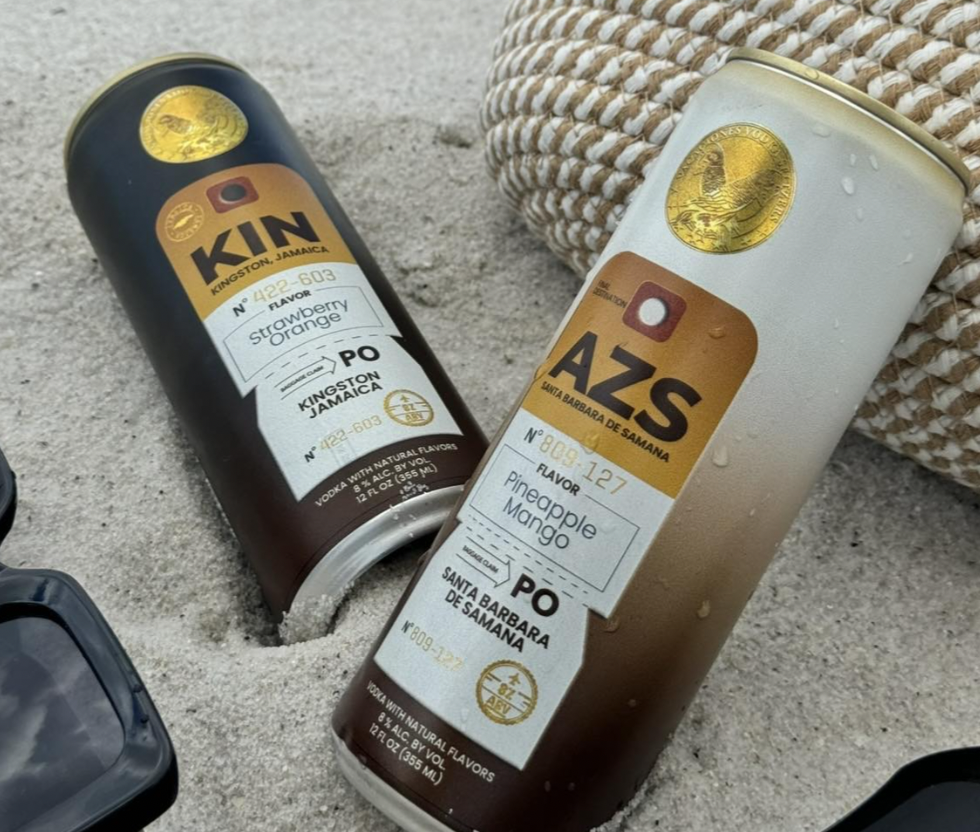
‘The Deliverance’ filming locations may surprise some travelers. This is what we know about the destinations that brought the film to life.


- Turismo rural y rural comunitario
- ¿Qué Hacer en Costa Rica?
Turismo rural y turismo rural comunitario
El Turismo Rural (T.R.) y Rural Comunitario (T.R.C.), le permite vivir una experiencia auténtica, con atención personalizada, lo que le proporciona el disfrute de nuestra ruralidad, conocer la esencia y la identidad del costarricense, caracterizada por la calidad que le brinda cada una de las empresas oferentes de este producto.
En una combinación perfecta entre naturaleza y cultura. Usted descubrirá el Pura Vida del costarricense, al disfrutar y compartir diversos ambientes llenos de paz, confort, convivencia con nuestras costumbres y tradiciones, inmersas en una espléndida diversidad natural.
En un ambiente familiar característico de la oferta, lo común es disfrutar de una atención personalizada que le permite profundizar en los conocimientos de la cultura campesina, las tradiciones agrícolas y de pequeñas industrias artesanales, adentrándose en la ruralidad de nuestro país mediante la gastronomía tradicional, la autenticidad de las comunidades y las riquezas expresadas en su forma de vida en un ambiente natural, donde las prácticas sostenibles promovidas por los empresarios prevalecen como parte de este producto.
En estas empresas,
Usted podrá:, la oferta de t.r. y t.r.c., le brinda servicios de:.
Sentir: la identidad cultural costarricense y compartir las vivencias de la cultura campesina.
Disfrutar: de un trato personalizado, que lo envuelve en un ambiente familiar de calidad garantizada.
Sumergirse: en las sensaciones que produce el adentrarse en la biodiversidad de la naturaleza, el compartir las tradiciones y los saberes locales.
Saborear: la cultura campesina, la esencia de nuestros pobladores y costumbres.
Recuperar: las tradiciones ancestrales expresadas en la aplicación de mejores prácticas ambientales, la oferta gastronómica, expresiones culturales locales, compartidas mediante bailes, música, artesanías con identidad, resaltando nuestra forma de ser y nuestra identidad.
Posadas de Turismo Rural y Rural Comunitario: mínimo tres habitaciones todas con baño privado y por lo menos una debe cumplir con Ley 7600 de Accesibilidad para personas con discapacidad; como parte de la oferta deben brindar servicio de alimentación, mínimo desayuno.
Agencias de Viajes Receptivas: especializadas en ofertas rurales tour operan a nivel local, estructuran sus propios productos, permiten adentrarse en nuestra cultura mediante productos hechos a la medida del cliente, con calidad y seguridad para el turista.
Actividad Temática: finca o área destinada a ofrecer servicios turísticos y/o de rescate del patrimonio cultural, material o inmaterial, compartiendo la cultura campesina y agrícola de las zonas rurales. Esto permite conocer procesos productivos y de pequeña industria y la aplicación de la sostenibilidad, mediante prácticas con tecnologías artesanales, procesos mecánicos o semi-industriales.
Fondas: restaurantes rurales, con menú basado en gastronomía tradicional de la zona donde se ubica, aunque es un restaurante de menor tamaño y adaptado en su ambientación a las condiciones del área rural, debe resguardar el nivel de calidad que garantice una apropiada manipulación e higiene para brindar al turista un servicio seguro.
Gastronomía: donde se adentrará en la degustación de gran diversidad de sabores elaborados con el conocimiento y técnicas tradicionales que garantizan una combinación de sensaciones que despiertan nuestros más íntimos recuerdos de la vida familiar campesina.
Cuando Ud. opta por el Turismo Rural y Rural Comunitario, está aportando al desarrollo económico local y a la mejora de la calidad de vida de los pobladores locales desde una perspectiva integral que promueve procesos de sostenibilidad, al generar beneficios expresados en los siguientes aspectos:
En lo económico:
- Diversifica las fuentes de generación de ingresos, potenciando nuevas oportunidades laborales para las mujeres y jóvenes, quienes obtienen ingresos frescos.
- Distribución del ingreso con mayor equidad.
- Posibilidades de nuevas oportunidades de negocios.
- Pone en valor los recursos que poseen las familias locales.
- Integra a la población local en la actividad empresarial.
- Articula empresarialmente a actividades de pequeñas y medianas empresas locales.
- Promueve la tenencia de la tierra por parte de los pobladores locales.
- Dinamiza el desarrollo local y regional (genera empleo a nivel local, está orientado a disminuir la pobreza rural, diversifica y dinamiza la estructura.
- Diversifica y enriquece la oferta turística nacional, diversificando y aportando a hacer más atractivo el país como destino.
- Promueve emprendedores de negocios turísticos en la zona rural.
En lo social:
- Articulación de actores económicos locales.
- Genera nuevas capacidades, aprendizajes y formaciones en las y los pobladores.
- Incorporación efectiva de las mujeres en la toma de decisiones empresariales.
- Posibilita mejorar la calidad de vida de las y los pobladores locales
- Propicia el fortalecimiento de las capacidades humanas (empresariales, culturales, políticas, organizativas y espirituales)
- Se sustenta en la gestión y participación local (fortalece la organización local en que participan varias familias o toda la comunidad)
- Ofrece como una experiencia turística la visita o participación en las actividades productivas que se desarrollan localmente (lo que puede complementarse con otras actividades como turismo de aventura, ecoturismo, artesanías y pesca, entre otras)
- Se sustenta en valores de solidaridad, cooperación y respeto por la vida.
- Requiere de relaciones periódicas y estables con las instituciones estatales.
En lo cultural:
- Rescate de identidad local.
- Protección de las raíces culturales.
- Identificación, rescate, conservación y promoción de patrimonio tangible e intangible.
- Innovación de servicios y productos con identidad local.
En lo ambiental:
- Rescate y conservación de recursos naturales: flora y fauna.
- Sensibilización ante un uso sostenible de los recursos naturales.
- Aplicación de mejores prácticas de manejo de los recursos naturales: producción orgánica
- Innovación en el uso de tecnologías alternativas orientadas a la sostenibilidad: energía solar, biodigestores, cosecha de agua.
Directorio de turismo rural comunitario
¿qué significan las hojas, programa de sostenibilidad turística (cst).
La Sostenibilidad busca una interacción equilibrada de tres factores esenciales dentro de la industria del turismo: la administración apropiada de los recursos naturales y culturales; la mejoría de la calidad de vida de las comunidades vecinas, y el éxito económico el cual contribuye a otros programas del desarrollo nacional.
El Instituto Costarricense de Turismo (ICT) desarrolló el programa de Certificado para la Sostenibilidad (CST) para empresas turísticas con el fin de poder categorizar y diferenciar a los hoteles costarricenses de acuerdo al grado en que su operación se acerque a un modelo de sostenibilidad, en cuanto al manejo de los recursos naturales, culturales y sociales.
Anteriormente los niveles se reflejaban en una escala de 1 a 5, donde 5 era el nivel máximo que reflejaba las prácticas sostenibles de la empresa, a la fecha aún hay empresas con esta clasificación. No obstante, actualmente el CST se distribuye en dos niveles de CST: BÁSICO Y ÉLITE, siendo el segundo la mejor clasificación del Estándar.

Ave Sol Sanctuary Posada Rural

Aves de Tierras Altas

Bribripa Posada de Turismo Rural

Cabinas El Quetzal

Cañaveral Posada de Turismo Rural

Casa Azul Lodge
Casa tucan tranquilo.

Cerro Biolley Posada Turismo Rural
Cerro pittier.

Colinas Verdes Zapotal Lodge

Danta Corcovado Lodge
Planeando su viaje a costa rica.
Itinerarios sugeridos
Alojamiento
Restaurantes
Otras actividades
Agencias de Viajes locales
Consejos de viaje
#EssentialCostaRica
Comparte tu experiencia, .

- Cette page n'est pas disponible en Français
OECD Multilateral Development Finance Week 2024: Reforming multilateral development co-operation

Timed around the launch of the OECD’s Multilateral Development Finance report, the Multilateral Development Finance Week is a biennial series of events organised by international organisations, think tanks and academic institutions with the aim to discuss the latest research and policy analysis of the multilateral development system and its financing. This year, the discussions focus on compounded crises, geopolitical shifts, and ongoing reforms of the aid sector funding.
Register to join the sessions:
24 September | Channeling Special Drawing Rights through MDBs: how to make it (finally) work
Time: 15.00 - 16.30 CET
Organiser: IDOS, ACET, BRICS Policy Center, IDDRI, SIIS.
25 September | Financing international development organisations in an age of disorder
Time: 14.00 - 15.30 CET
Organiser: IDOS/University of Glasgow
26 September | Financing the UN Development System; Resourcing the Future
Organiser: Dag Hammerskjold Foundation
29 September | Challenges and opportunities for multilateral development finance in South Asia
Time: 15.00 - 16.30 BST (Bangladesh Standard Time) | 11:00 – 12:30 CEST (Central European Summer Time)
Organiser: Centre for Policy Dialogue
Related content
- Dashboard Use of the multilateral development system by DAC members The Multilateral Development Finance dashboard presents recent trends in multilateral development finance in order to inform decisions by the members of the OECD Development Assistance Committee (DAC) on their strategic engagement with multilateral organisations.

Dashboard on DAC members’ use of the multilateral system
Explore each DAC member’s contributions to multilateral organisations


IMAGES
VIDEO
COMMENTS
Rural Tourism and Community-Based Rural Tourism Lodging: Minimum of three rooms, all with private bathrooms. At least one must comply with Law 7600 governing Accessibility for People with Disabilities. The offering should provide meal service, at least for breakfast. ... The Costa Rica Tourism Board (ICT) developed the Certificate of ...
Rural Tourism. Get a first-hand look into the day-to-day life of Costa Ricans with rural tourism, which focuses on the preservation of local culture while encouraging sustainability. Give back to the people and places that make your trip unforgettable as you learn about local traditions and cultures. Enjoy the most authentic Costa Rican ...
The Juanilama Community: Rural Tourism in Costa Rica. This is the first of a series of blog posts about ecotourism and rural tourism in Costa Rica. Earlier this month, we organised a tour for Hannah, Kasi and Simone, bloggers and members of the Ethical Influencer Network. Hannah kicks off the series by sharing with us her experience at the ...
5 Benefits of Rural Tourism in Costa Rica. 1. Helps tourists experience an authentic village life. Rural tourism provides tourists with an excellent opportunity of living with the locals, eating home-cooked meals with local farm produce, and experiencing rural life firsthand. They can take a stroll on the farms in the mornings, help the farmers ...
In Costa Rica, there is the Association of Community Rural Tourism in Costa Rica (ACTUAR), which emerged in 2001, during the first Ecotourism meeting, organized by the United Nations Program for Small Grants (PPD). They have supported over 50 community rural tourism initiatives as a means to promote sustainable development.
Here are a few activities that allow tourists to support local communities during their travels in Costa Rica…. Culture & Tradition: The Oxcart has long been a symbol of rural Costa Rican history, pride and tradition. For centuries, numerous farms all over the country utilised this traditional form of transportation to cart their coffee beans ...
EVENT CALENDAR. You can see the special events and activities for you to enjoy to the fullest ... Finca Siempre Verde is an ecotourism destination located in the small tranquil community of Mastatal, in close proximity to Costa Rica's newest national park, La Cangreja National Park. It is family owned and operated by a Costa Rican family that ...
In the isolated rural community of Providencia in the Los Santos region of Costa Rica the residents have had to make do with what they have as both an economic and environmental necessity. Located about three hours south from San Jose, Providencia is reached seven miles off the Pan American Highway down a narrow, winding, dirt road that borders ...
Costa Rica Tourism Board, Institutional Site. Costa Rica Convention Center, Promotional Site © Costa Rica Tourism Board | Terms of Use | Privacy Policy | Site Map
Costa Rica has been a bridge since its emerging from the ocean millions of years ago. ... A form to experience this way of life is through rural tourism, where you can exchange everyday life with locals in a remote rural areas in different zones of the country, and learn about our local culture, customs, and foods. ...
To create an authentic rural tourism experience in Costa Rica, which creates an interrelation between the Mollejones community and its visitors. This is achieved by offering a product with our essence, committed to inclusion, to the principles of sustainability and socio-cultural tourism activation. Please note: These experiences are booked ...
The territory is divided into 29 national parks, 19 wildlife refuges, 8 biological reserves, and a series of protected areas that captivate lovers of ecotourism activities. Excursion offerings and tours are varied, including: horseback riding, hiking mountain trails, guided tours for bird watching, forests, landscapes and natural heritage sites ...
Rural Experience in Costa Rica. Rural tourism in Costa Rica brings simple but authentic experiences. The visitor can be part of the daily rural life that is lived even in many communities of the country. Palmichal de Acosta, Manuel Antonio, Chira Island, Bagaces, Tamarindo . $1,235 . Show More
Nacientes de Palmichal Rural Inn. The inn is located in Nacientes de Palmichael of Acosta, San Jose, one kilometer east of the Escuela San Pablo Palmichal. It opens at 7:30 a.m. The cost ranges from C20,000-27,5000 ($40-55) per person.
Visiting costa rica is also be part of the rural tourism life in Costa Rica. Rural tourism or agrotourism are two terms that describe the essence of Hotel de Campo. Hotel de Campo, which has been developed on a property of 50,000 m2, over time has become a small producing farm. Hotel de Campo is a family-run tourist structure.
Sustainable Destinations in Costa Rica: Arenal and Monteverde. Hanging bridges in La Fortuna, near Arenal. Established in 1991, Arenal Volcano National Park protects 29,850 acres and at least 131 ...
The Costa Rican government is doing a great deal to promote rural tourism. The governmental agency "Institute for Rural Development" INDER is providing assistance to rural communities to establish tours such as: "Route of the Blue River" in North Eastern Costa Rica. Here is the home to the indigenous people-The Maleku.
Rural Tourism in Costa Rica's Pérez Zeledón. Pérez Zeledón is in the southern region of Costa Rica. It's known for being home to Cerro Chirripó and Los Crestones. However, this area offers a wide range of rural tourism activities that national and international tourists can enjoy throughout the year. Jorge Fallas, president of the ...
The rural tourism offered in Costa Rica provides simple but authentic experiences. It allows for one or two days to be part of the daily rural life that is lived even in many communities. It allows knowing the essence and identity of the Costa Rican in a perfect combination between nature and culture. You can discover what the Pura Vida of ...
In Costa Rica visitors will find everything they are looking for: adventure, sun, beaches, forest, wildlife and wellness, and much more. The best way to begin planning an unforgettable vacation is getting firsthand information about the different certified activities and hotels available in the country. All the activities found in this section ...
The institutions seek to declare 2020 as the International Year of Agrotourism and Rural Tourism. ... Costa Rica, which will end on 31 October. The UNWTO and IICA will implement projects to promote capacity development in areas such as positioning and destination branding in rural tourism, development and diversification of products and digital ...
Costa Rica is a paradise for eco-conscious travellers, nature enthusiasts, and adventure seekers. This small Central American nation packs an incredible punch when it comes to biodiversity and sustainable travel. With lush rainforests, active volcanoes, and pristine beaches, Costa Rica offers unparalleled opportunities for eco-tourism. In this article, we'll explore the benefits of eco ...
Chances are, if you're going to Costa Rica, you're already expecting to hit the capital city of San José. This vibrant cultural hub serves as the epicenter of the nation's tourism, providing tons of excellent museums, high-end restaurants, and safe hotel stays for visitors from around the world. While navigating the streets of San José, be sure to take in different samples of the ...
TC can have significant impacts on the people and economy of Costa Rica (Alfaro et al., 2010; Alfaro & Quesada, 2010; Hidalgo et al., 2020).As shown in Figure 1, TC generally originate over the tropical North Atlantic Ocean or the Caribbean Sea before moving towards Central America.Some TC also occur in the Eastern Tropical Pacific. The period between August and October experiences a higher ...
Costa Rica provides the perfect combination of relaxation, adventure, culture, fine cuisine and wildlife. Visitors find in Costa Rica an adventure paradise set in the most beautiful natural and safe environment. It is also the home of four World Heritage sites certified by UNESCO. Essential Costa Rica is about promoting organic ingredients ...
In August, Argelès-sur-Mer (Pyrénées-Orientales) welcomes almost 100,000 people a week, but that's the resort's capacity: There's no reason to point to this seaside tourism as a form of tourism ...
Turismo rural y turismo rural comunitario. El Turismo Rural (T.R.) y Rural Comunitario (T.R.C.), le permite vivir una experiencia auténtica, con atención personalizada, lo que le proporciona el disfrute de nuestra ruralidad, conocer la esencia y la identidad del costarricense, caracterizada por la calidad que le brinda cada una de las ...
Timed around the launch of the OECD's Multilateral Development Finance report, the Multilateral Development Finance Week is a biennial series of events organised by international organisations, think tanks and academic institutions with the aim to discuss the latest research and policy analysis of the multilateral development system and its financing. This year, the discussions focus on ...